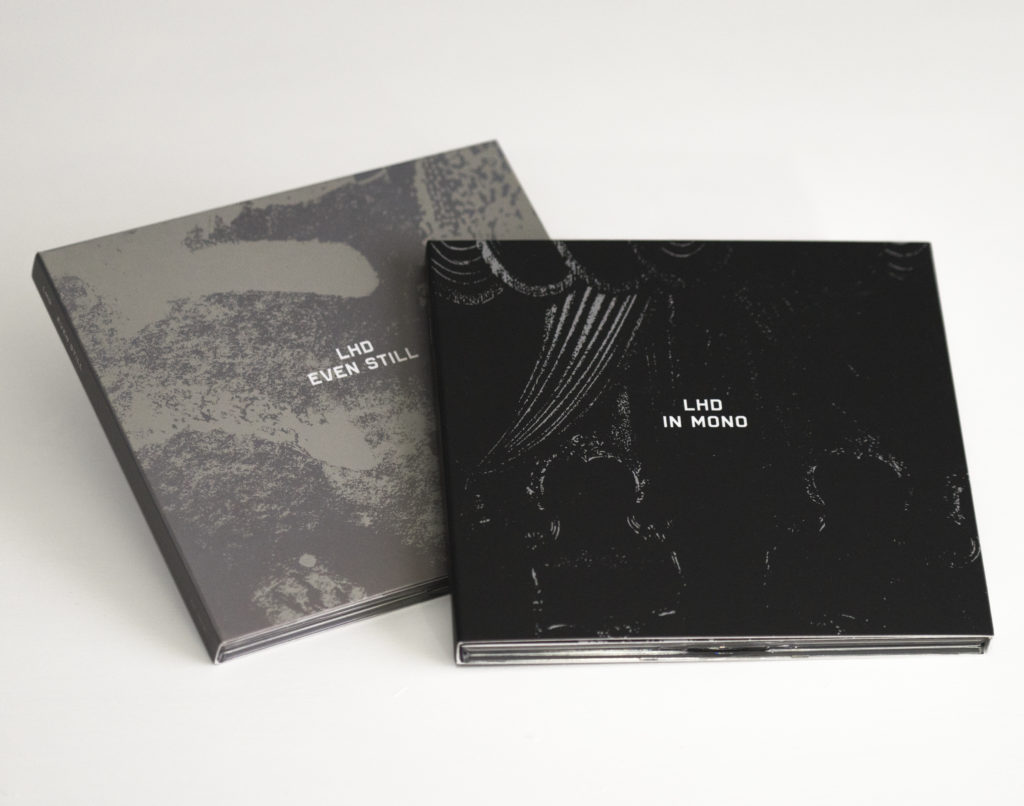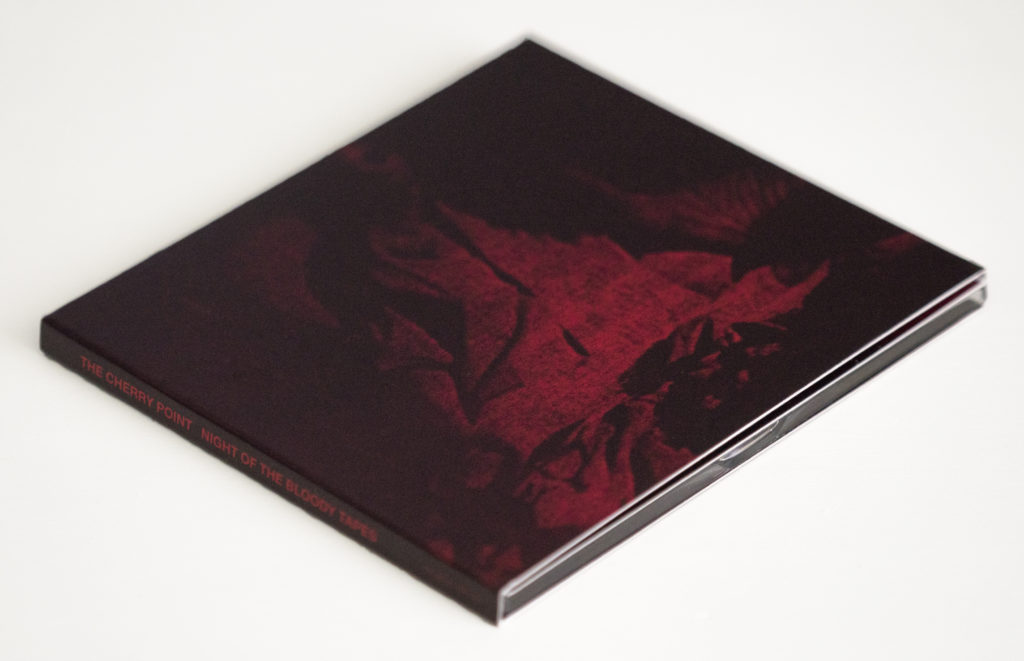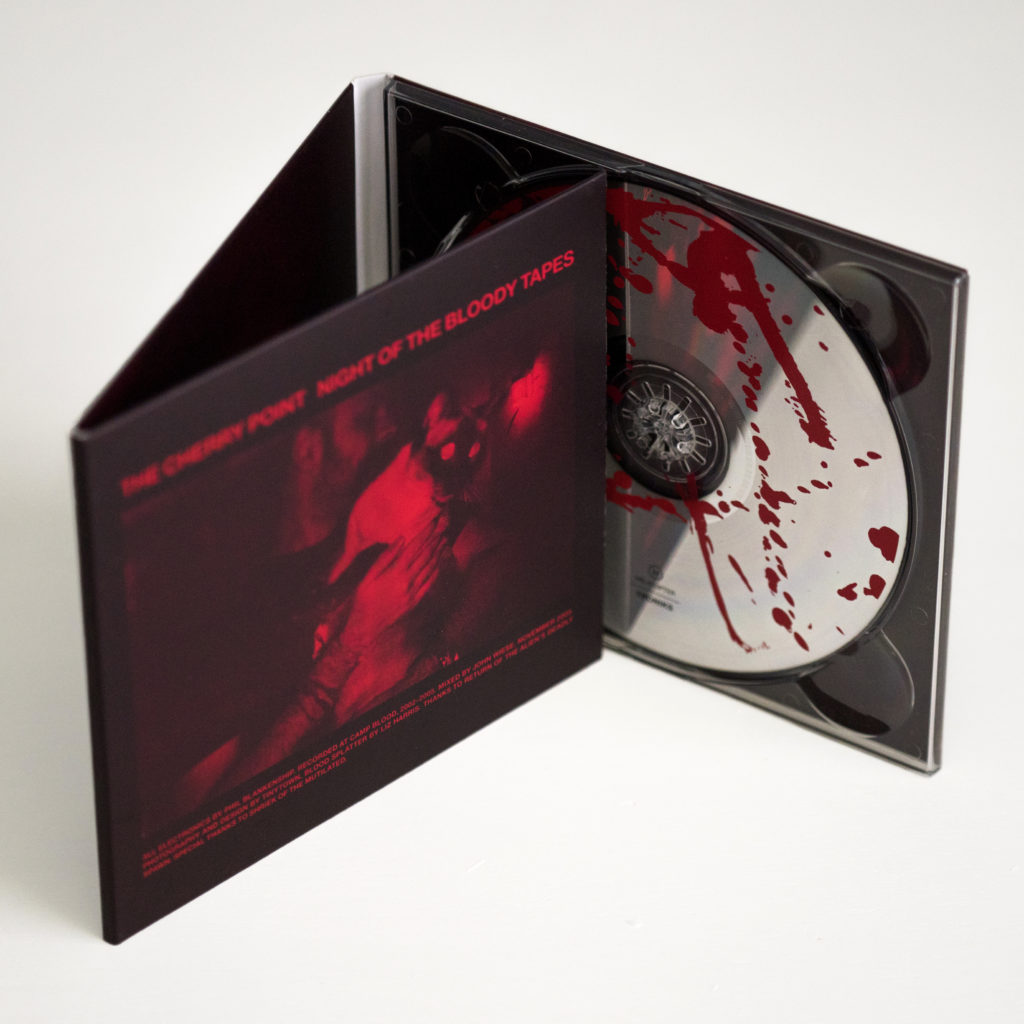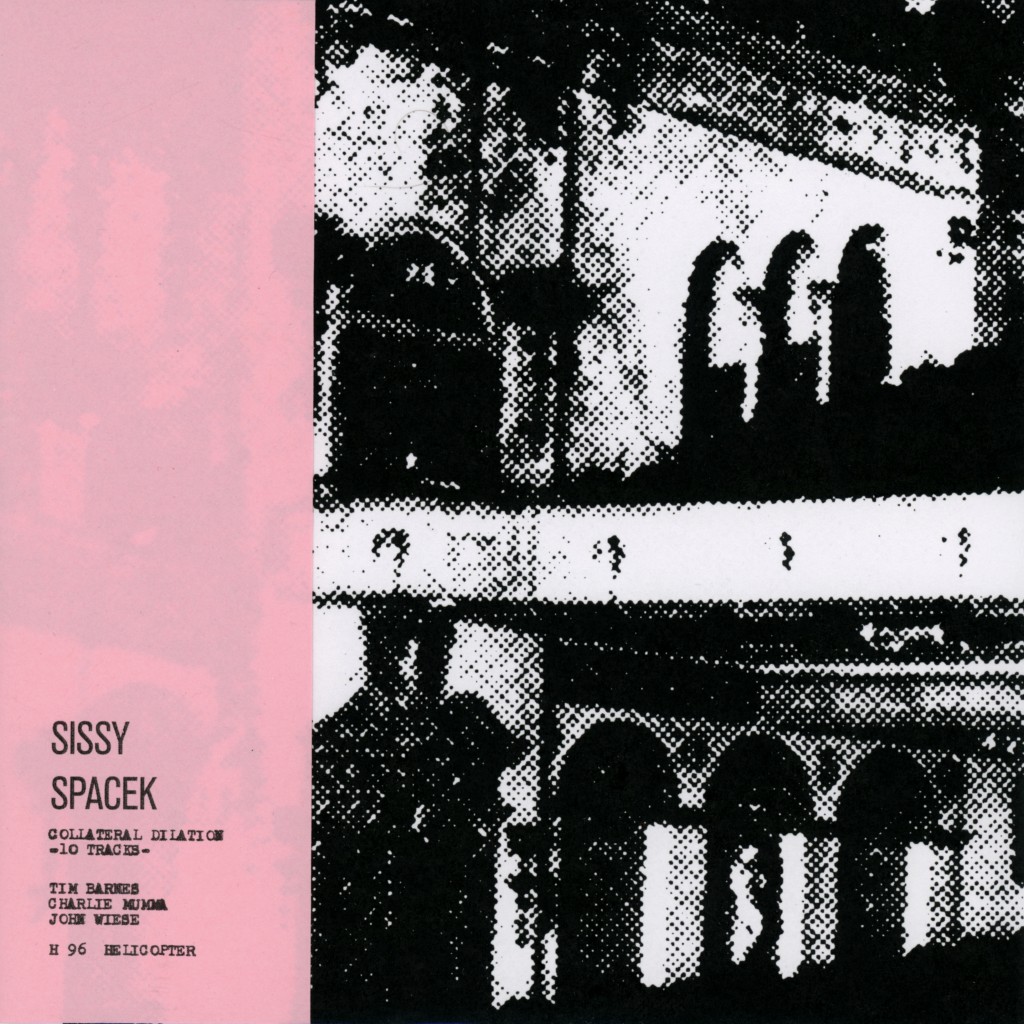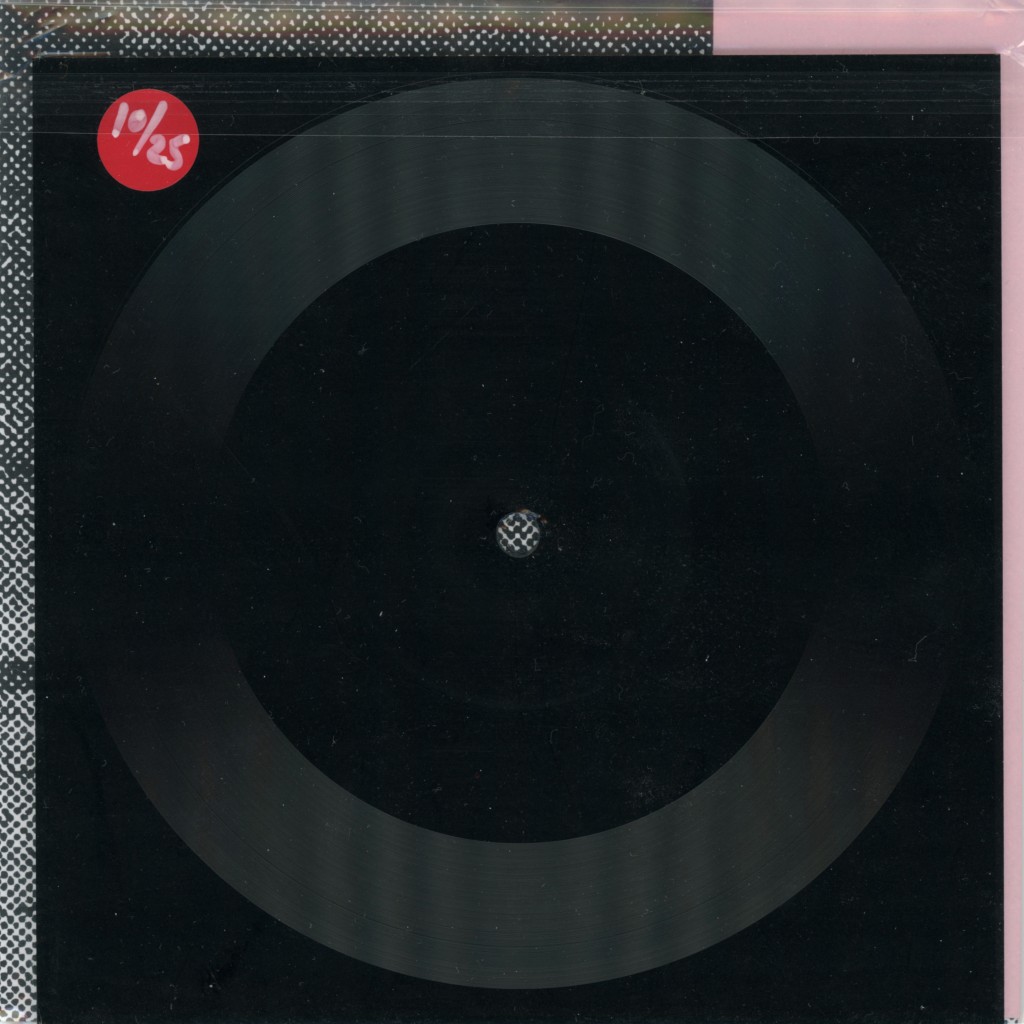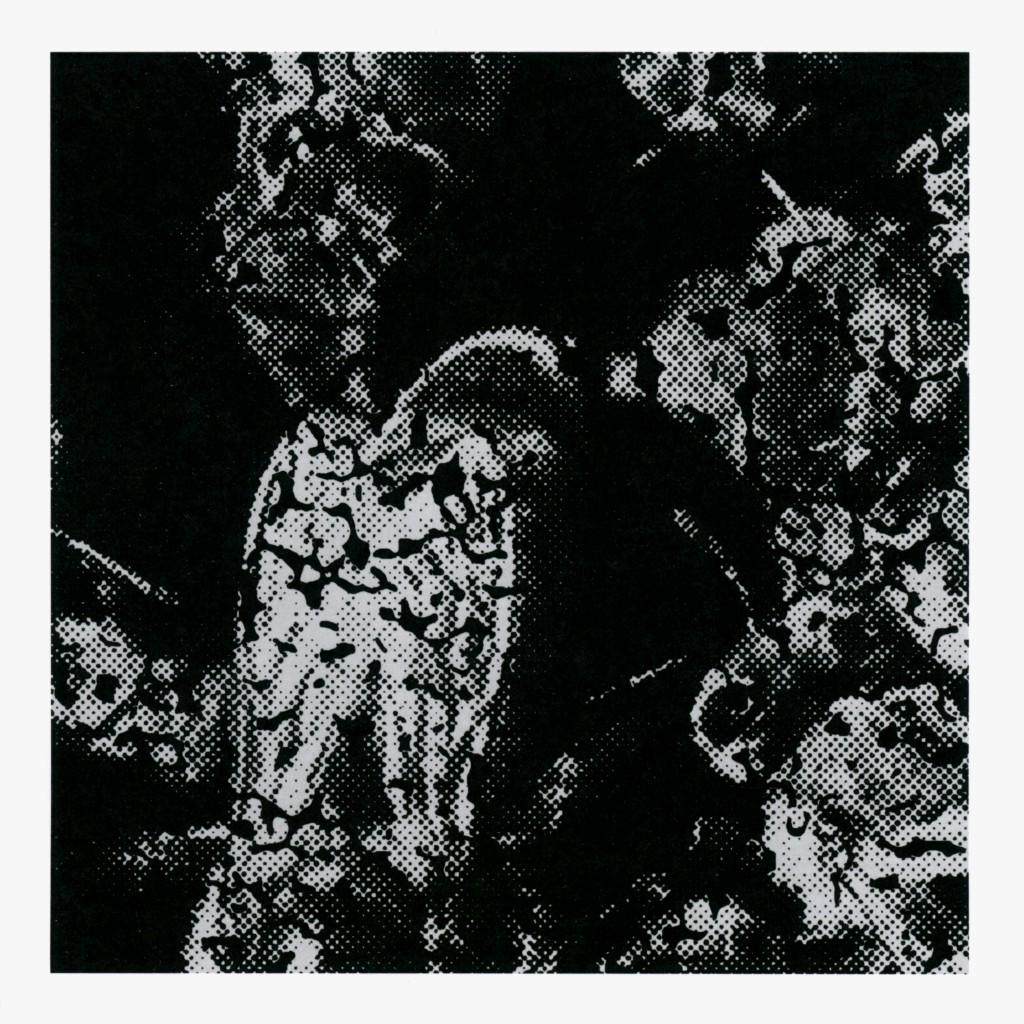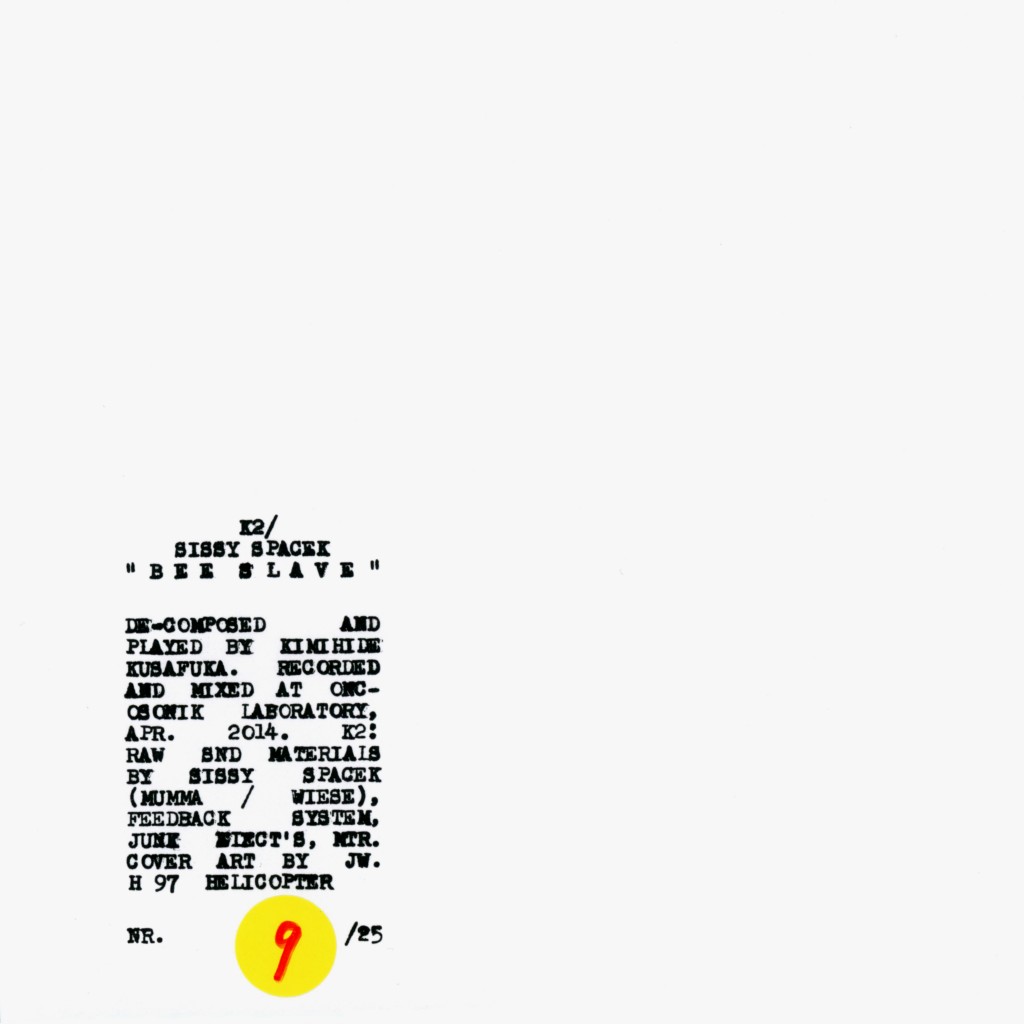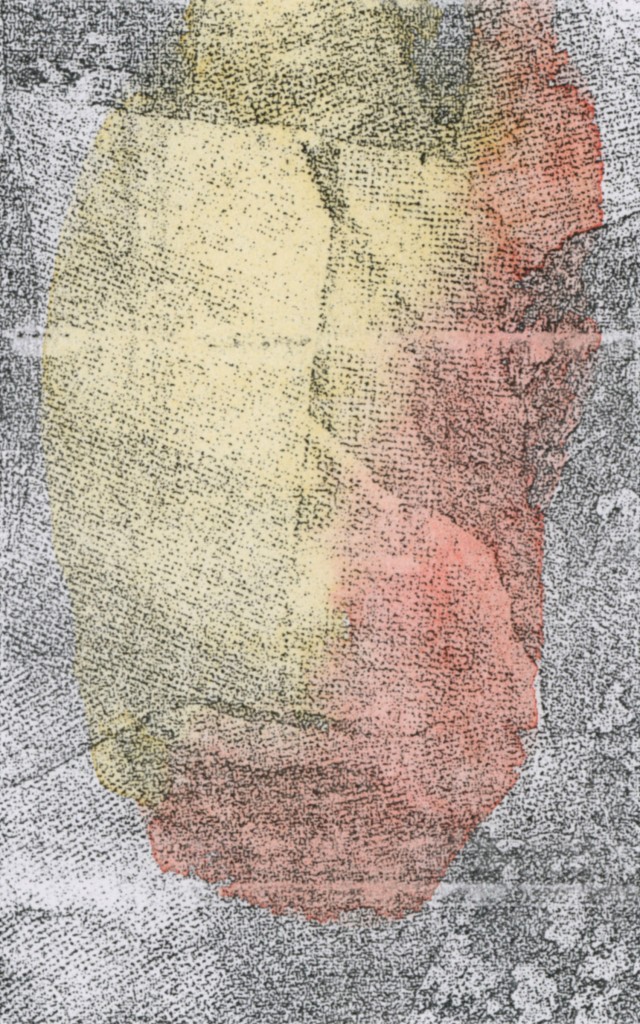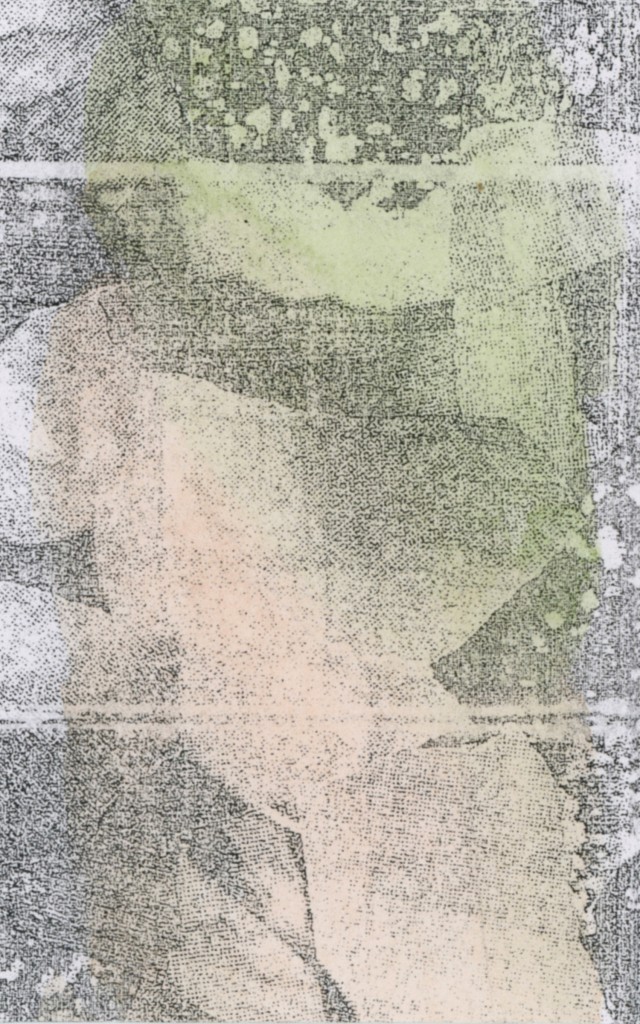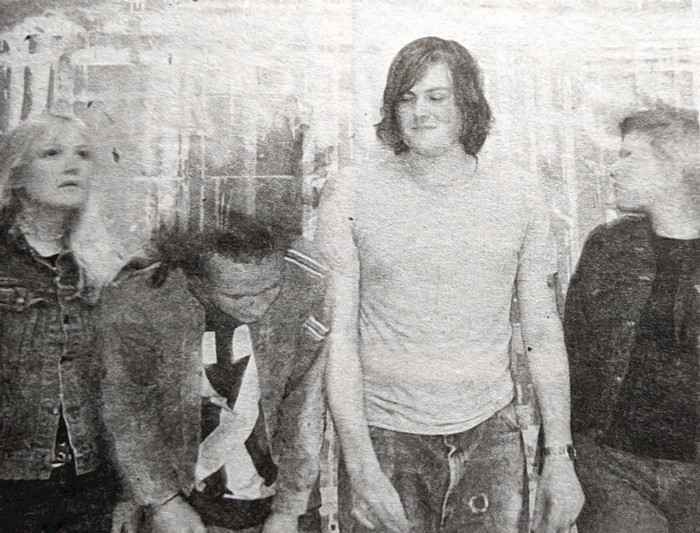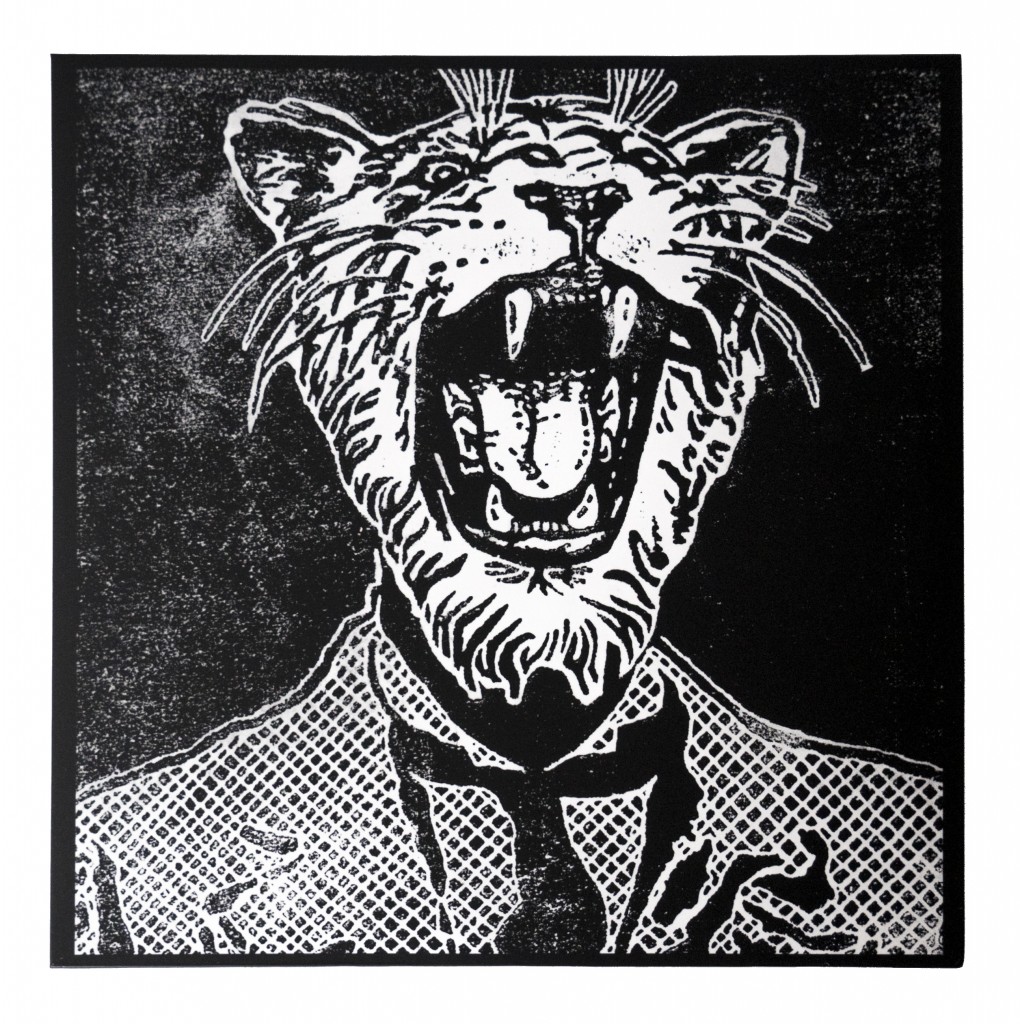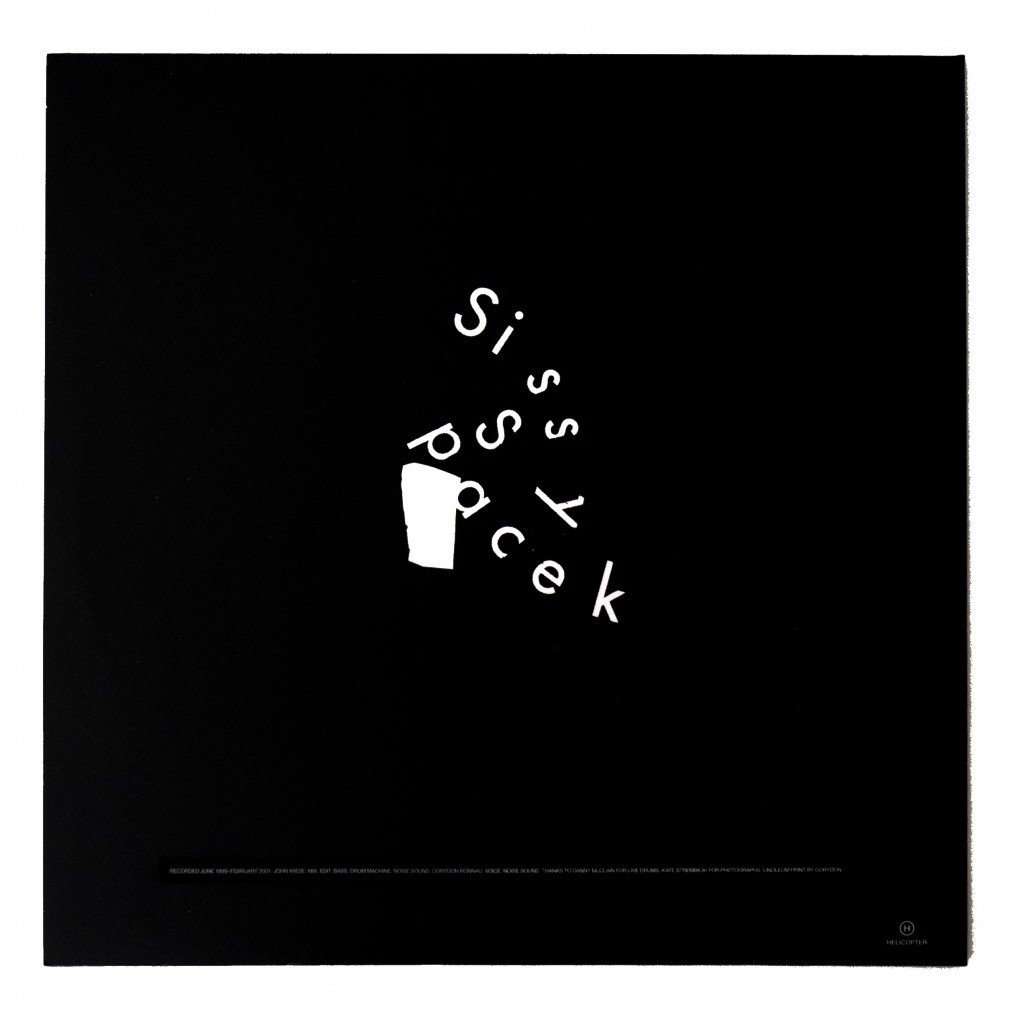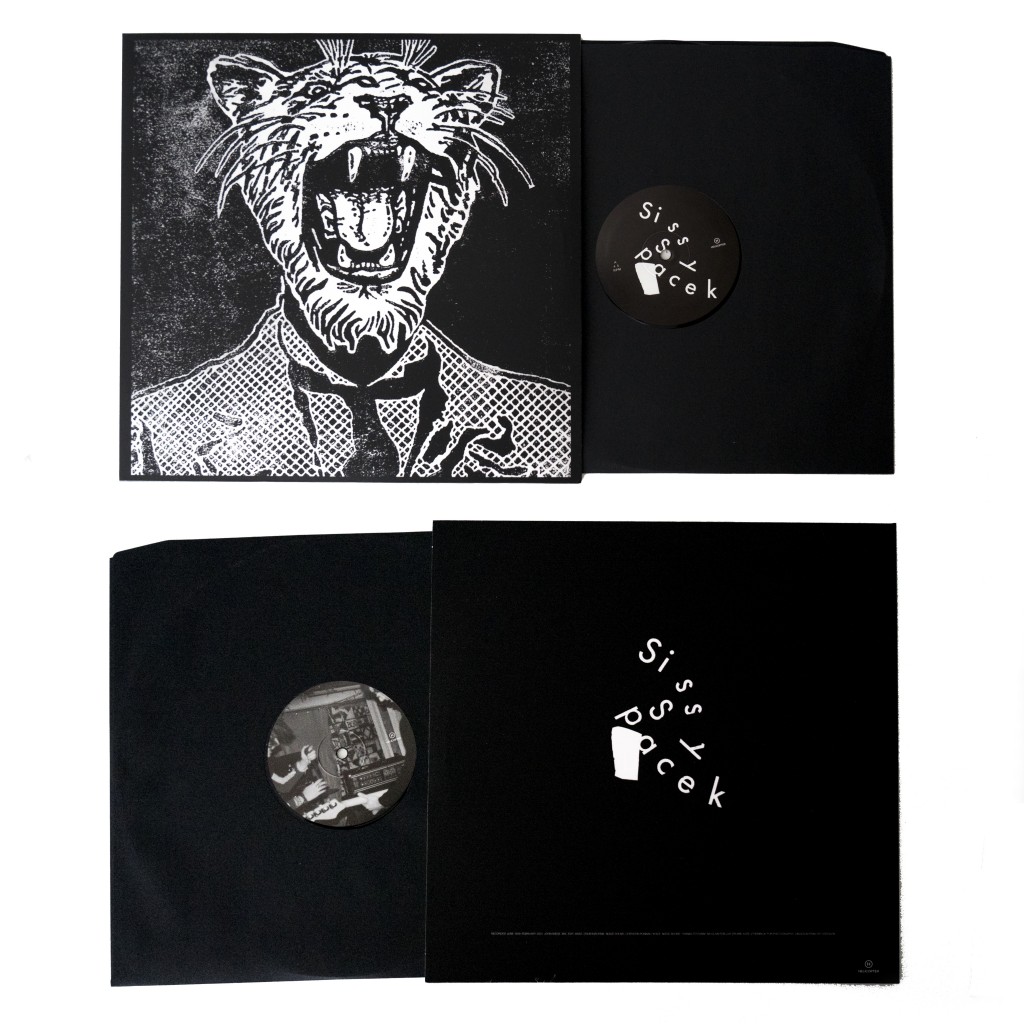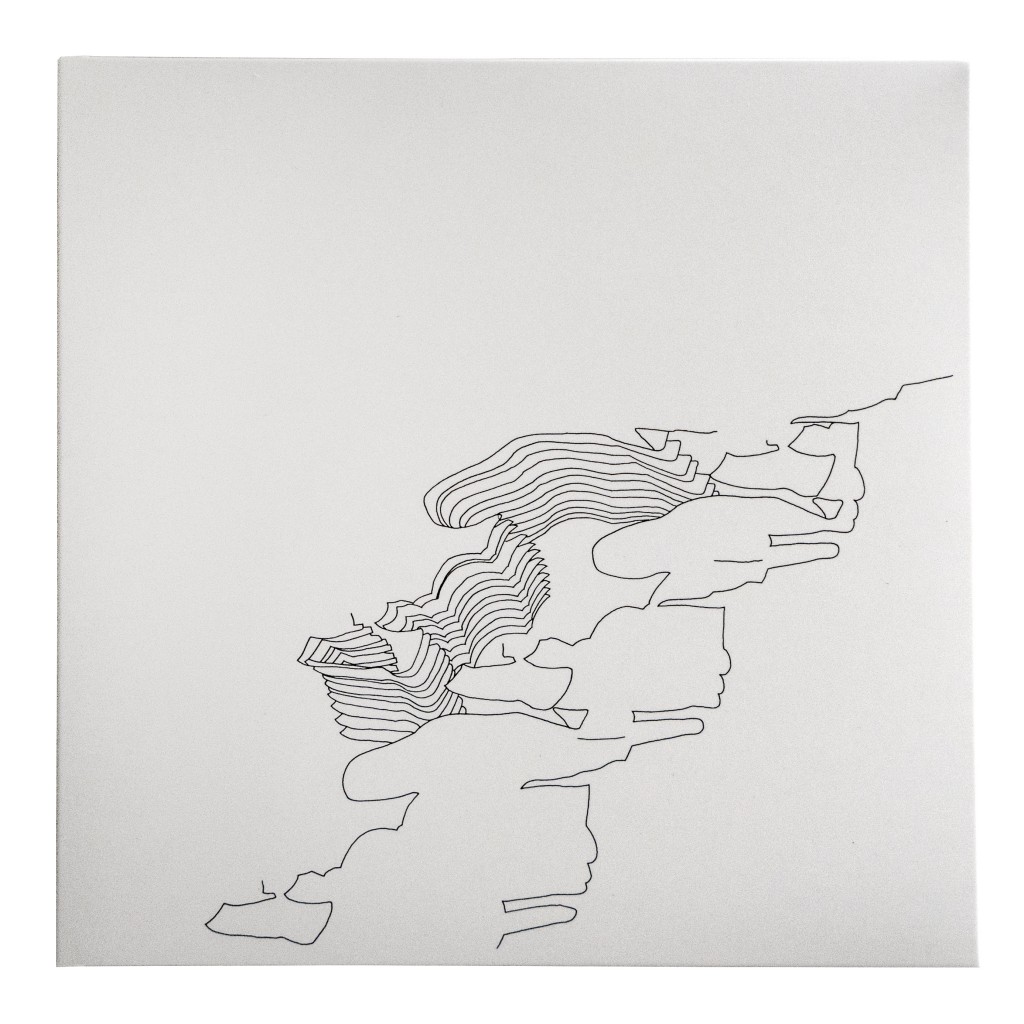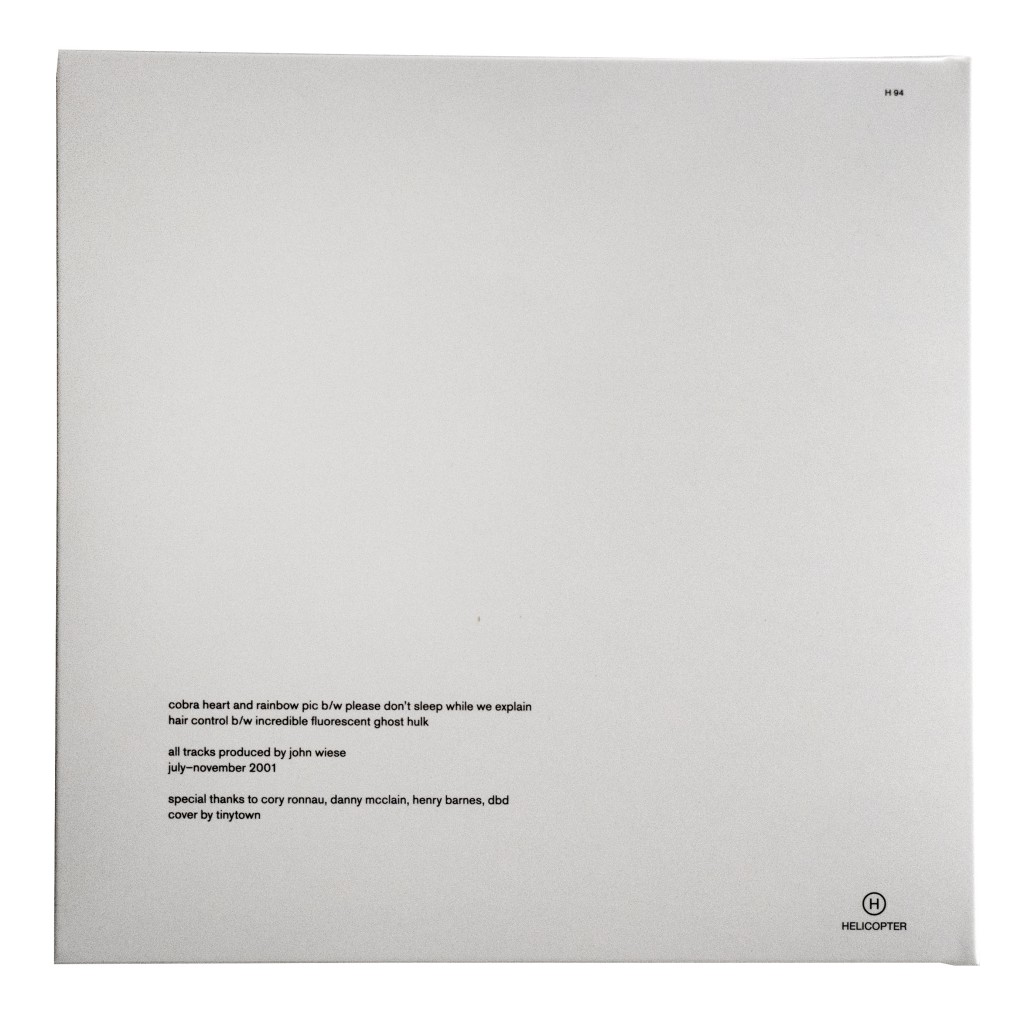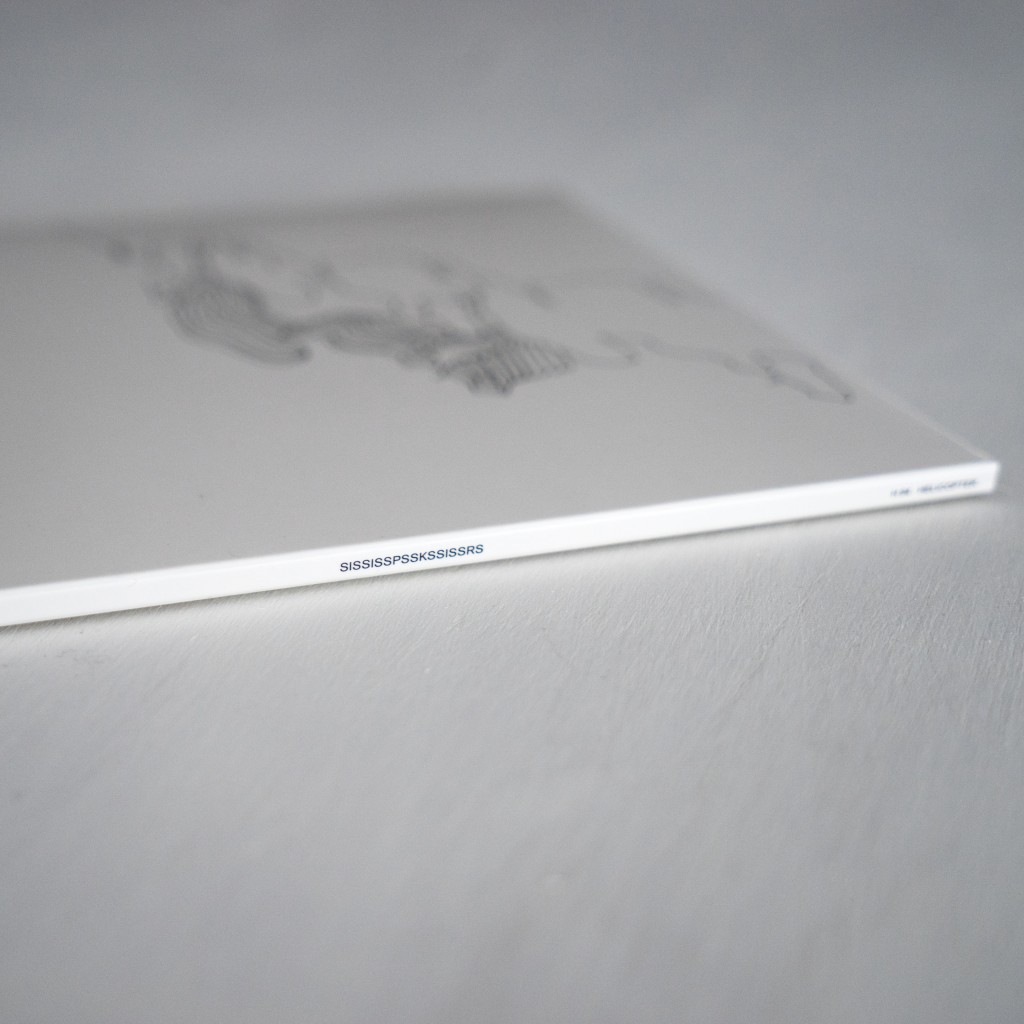Tag Archives: Helicopter
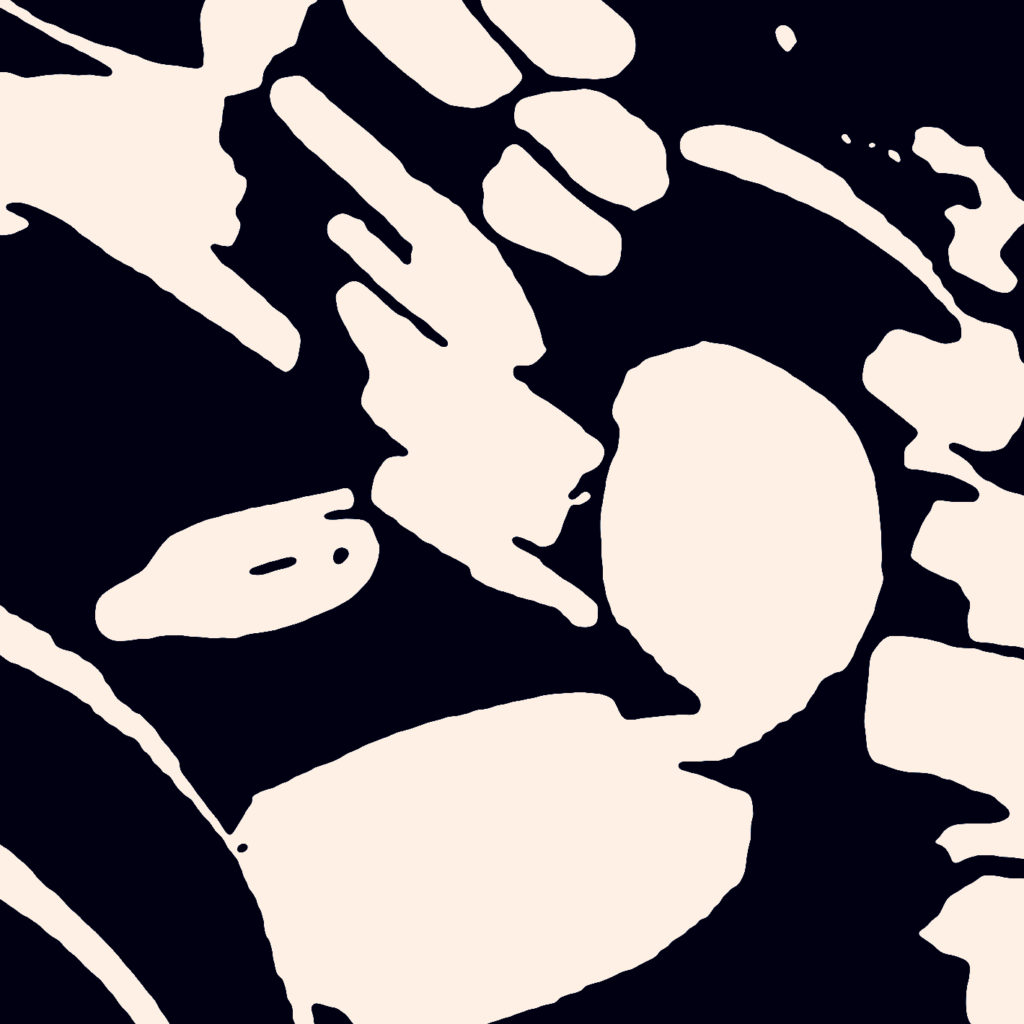
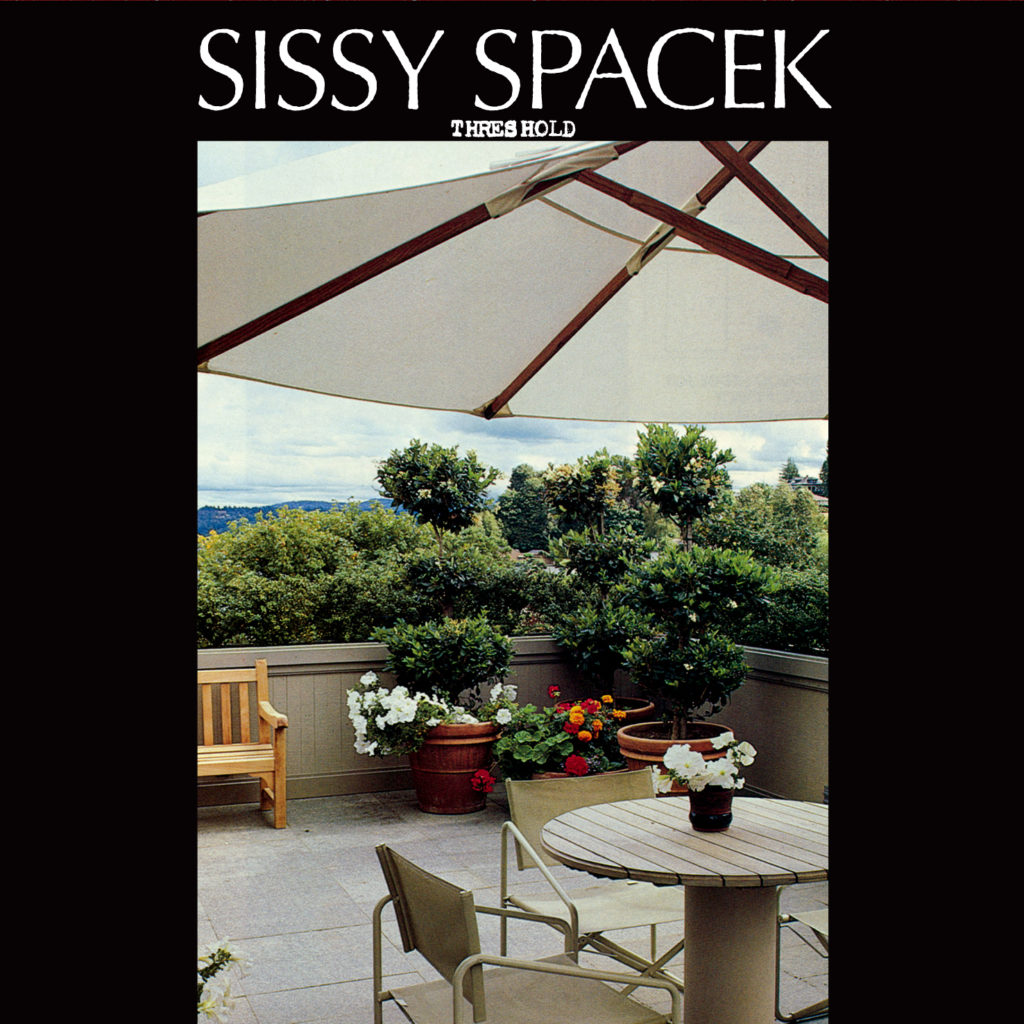
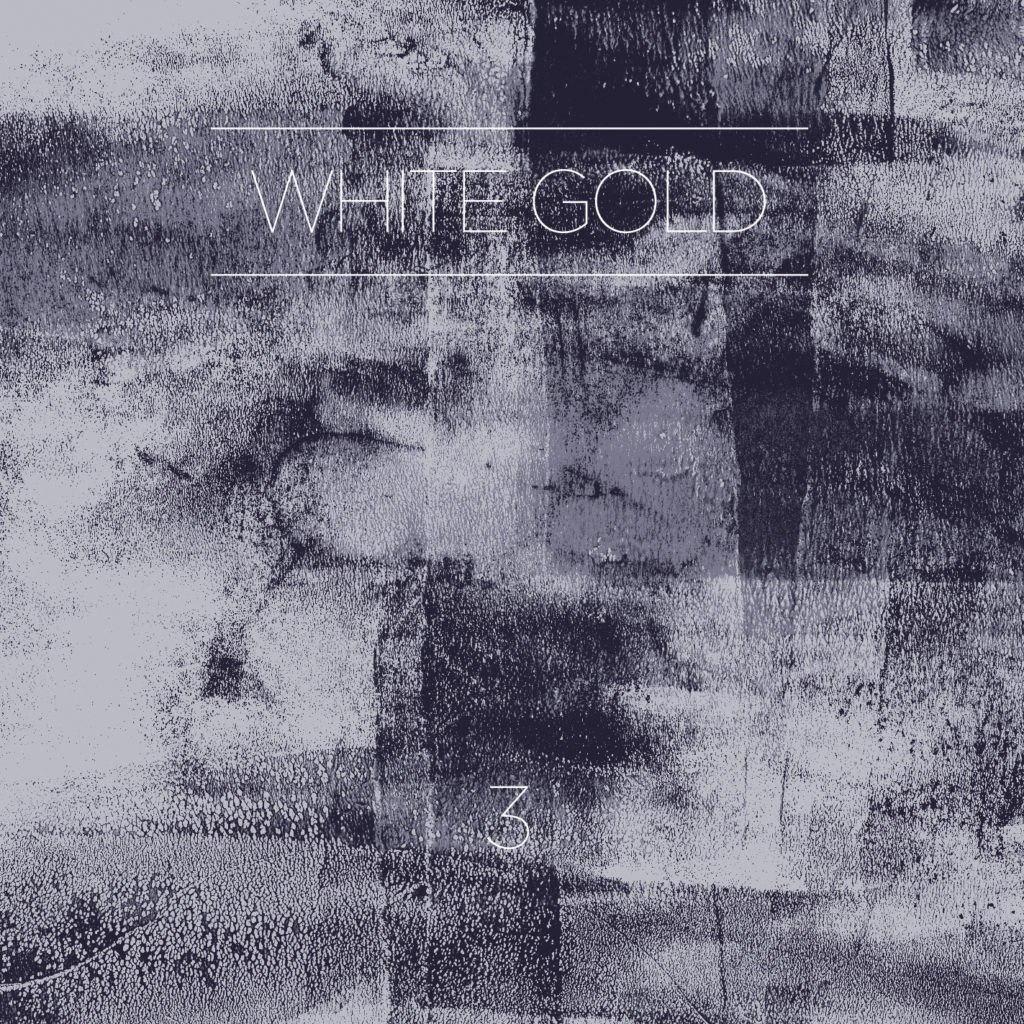
Sissy Spacek “Mechanical Abstraction” CD (Helicopter)
Sissy Spacek “Threshold” CD (Helicopter)
White Gold “3” CD (Troniks)
http://helicopterdistro.bigcartel.com
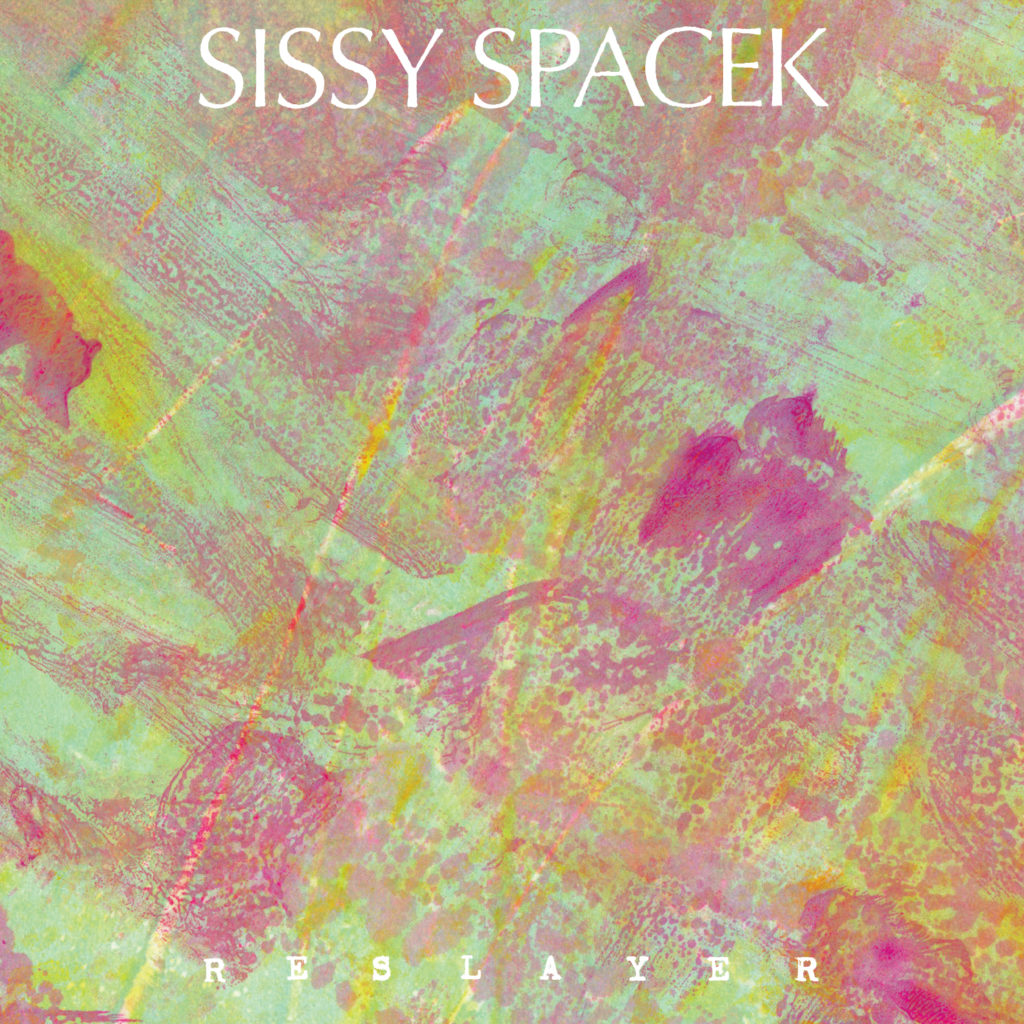
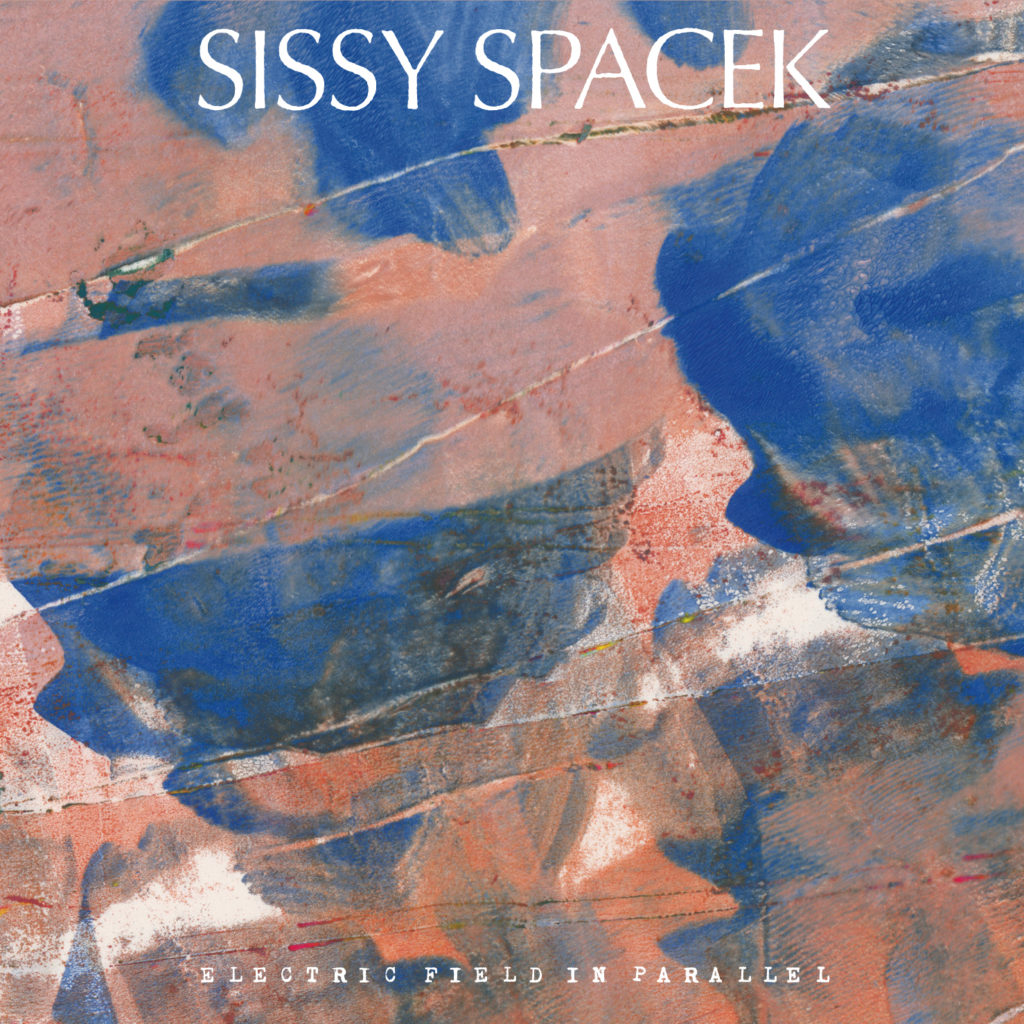
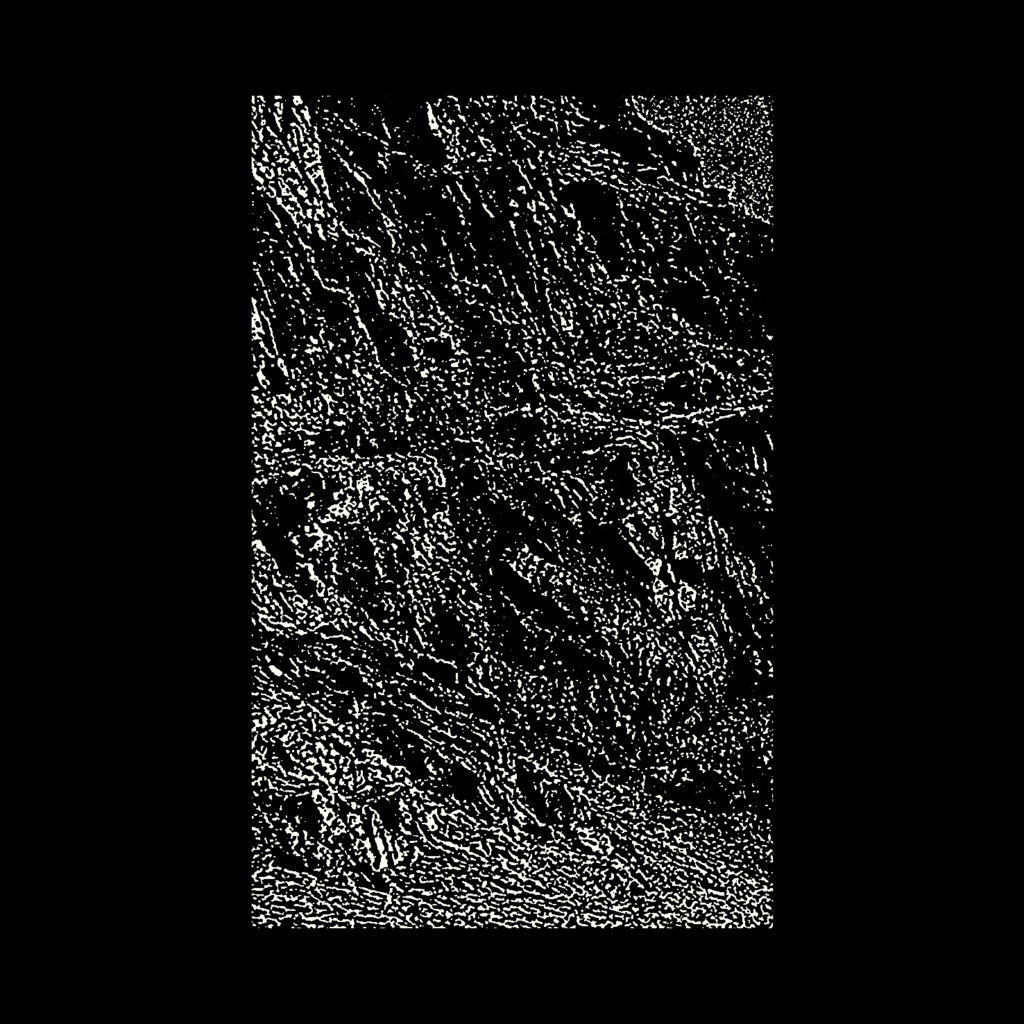
Sissy Spacek
Reslayer CD
Helicopter
H 129
1. Long Distance Vertical
2. Abundance of Caution
3. Madrigal
4. Ronco
5. See-Saw
6. Narrow Radiating Structure
7. Cavity
Sissy Spacek
Electric Field In Parallel CD
Helicopter
H 130
1. White Car
2. Kaleidoscope
Sissy Spacek
Blear CD
Gilgongo Records
GGGR-127
1. Things Take Time
2. Gang Reduction
3. Up A Tree
4. Garbage Matte
5. Tear Go By
6. Bonus Live KXLU
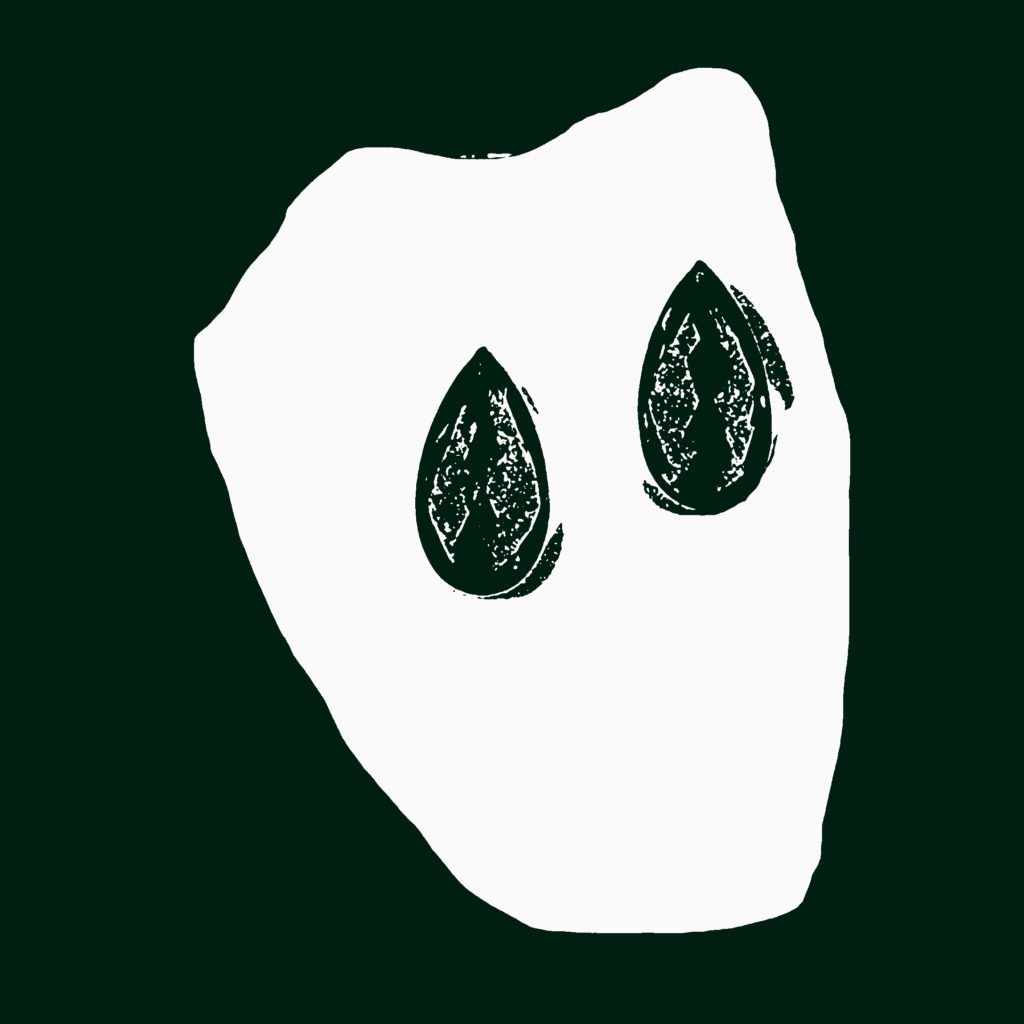
Mitchell Brown/John Wiese
Blue Orange 7-inch
Helicopter
HEL 99086
Numbered and stamped edition of 20


Sissy Spacek
Radio Format 3xCD Boxset
Helicopter
“While we may live in an over saturated time of hi-definition, microwave-pulse paced images and video snippets, one format that has remained in play since the early 1900’s is that of radio. A format perhaps overlooked most in its ability to not only act as a conduit of audio, but also that of a uniquely non-visual live performance, facilitating a direct audio-only portal from performer to the imagination of the listener.
Radio is a place where live collaboration and conversation can occur not just between performers, but with that of the unseen and unheard. There is no immediately distinguishable audience reaction for the performer to intake or react upon. No other sounds or stimuli for the audio generator to realize other than that of which are produced from the point of broadcast. The listener however, collaborates deeply (and often unconsciously) in the listening experience dependent on their environment. A car radio stuck in loud honking Los Angeles traffic with the windows down. A live improv broadcast blasted on a boombox in the back room of a noisy, busy restaurant kitchen. A strange mix show heard only through an open window, intriguing a passerby with the small tidbit that is overheard, unaware of the content let alone the station or origin of the sound. This methodology forces new ways of listening as well as performing, and if there’s one unit evolving and dissecting audio that thrives in such an area of exploration, it is that of Sissy Spacek. The primary core of the ever morphing group here consists of John Wiese and Charlie Mumma, but as shown on these recordings and throughout their discography, Sissy Spacek not only includes, but more accurately incorporates a host of brilliant collaborators from many walks of life and realms. Here we find Sara Taylor (Youth Code), Sarah Bernat (Bad News, 16 Bitch Pile Up), GX Jupitter-Larsen (The Haters), and Damion Romero (Speculum Flight, Astromero) collaborating with the group on these utterly unique, live KXLU broadcasts (a Los Angeles station which Damion Romero himself hosts the decades long running Psychotechnics program that these very sessions appeared on).
Which brings us back back to perhaps one of the greatest tricks, traps, and aspects found in radio — What are we hearing? Who has made this sound and where does it come from? Do these sounds come from the radio room itself? Or are they a product of some crude tape recording forged in a bedroom and brought to be manipulated? Was the group together throughout these decisions or were they conjured individually? What was the vibe and time of day? Was the studio well lit, or draped in darkness for these mysterious sessions? Who is doing what and how? With the visual senses removed, and while simultaneously understanding that these were live radio performances, even a veteran listener is still left to be puzzled by the thoughts and sounds therein. May this collection mark a crucial chapter in the infinite sonic freedom that Sissy Spacek represents. An ability to wildly, freely, expertly navigate the ever changing waters of improvisation and experimental creativity. An appreciation for forms and formats new and old. A respect and reverence for the transmission of thought and sound in all forms, and for the powerful experiences that these methods evoke.” (Brandon Hill)
http://helicopter.bigcartel.com
Polar Visions Amplitude reviewing —
Sissy Spacek – Featureless Thermal Equilibrium
Released on September 4, 2020 by Helicopter
Reviewed format: CD album
Connected listening – there are various ways to order a selection of Sissy Spacek’s further discography. The Helicopter mail-order stocks various Sissy Spacek releases and solo works by John Wiese and associates, you can find it here: https://helicopter.storenvy.com/collections/924915-sissy-spacek
Sissy Spacek’s releases on both physical and digital format are also available from their Bandcamp page here: https://sissyspacek.bandcamp.com/music
For an overview of Charlie Mumma’s solo releases as well as the releases he’s featured on as part of various bands, you can check out Discogs here: https://www.discogs.com/artist/1491175-Charlie-Mumma
In a similar manner, Jay Randall’s solo and band releases can be found on Discogs here: https://www.discogs.com/artist/393304-Jay-Randall
Several solo releases by John Wiese are available on physical and digital format from his Bandcamp page here: https://johnwiese.bandcamp.com
As I mentioned in the previous Polar Visions Amplitude review on this blog, 2020 has proven to be quite a fruitful year for both new Noise releases as well as reissues of classic Harsh Noise albums, mentioning the recent Helicopter / Troniks batch of CD releases and today we’re going to start diving into these with a review of one of the most recent Sissy Spacek albums, Featureless Thermal Equilibrium. Sissy Spacek is a John Wiese formed band which as being one of his most well-known projects not only carries a very prolific discography of a big number of albums, EPs, singles and many miscellaneous releases but is also an ever-changing line-up of extreme music artists and performers from various directions of experimental and contemporary music. This makes Sissy Spacek a rather versatile band with the kind of music / Noise you’re going to get on every release being quite unpredictable at times as this could vary from monolithic Harsh Noise to gritty Noise filled Grindcore to free-wheeling electro-acoustic cut-ups of instrumental and vocal recordings created by John Wiese. On Featureless Thermal Equilibrium we get to listen to Sissy Spacek as a raw power filled anarchist Grindcore unit which is continually blasted through with screechy Noise courtesy of John. Sissy Spacek’s core of John Wiese’s streams of Noise (and vocals in this case too) and Charlie Mumma’s fiery thunderous drums and vocals is strengthened here with Jay Randall (of Agoraphobic Nosebleed and various other terror-filled extreme Grindcore and Harsh Noise themed projects) providing particularly aggressive and appropriately screechy screamed vocals to the general energy-filled chaos that is this 24-minute new album. The album is one hell of a ride of dissonant murky noisy sonic energy that blends John Wiese’s screechy layers of Noise with surprisingly crisp sounding vocals and drums which in the case of this album still have quite a dynamic and roomy sound to them, creating some kind of balance in what in other cases could end up being more of a wall of Noise with all elements blending into eachother. Before we dive into this speedy album, it’s good to mention the neat looking presentation of Featureless Thermal Equilibrium, designed by John Wiese. The CD version of the album comes in a sturdy thick 6 panel digipak featuring some great minimalist artwork. The cover artwork is quite striking with its eerie grainy image of a face (which looks familiar but I can’t quite place where I saw it before) with the name of the band and album title set in some quite classy looking serif type. It has quite the classic LP sleeve look to it which purely based on the cover could suggest that the music contained within would be more like Hard Rock or Metal but its grittiness does express the actual music rather well. Other than the cover artwork the imagery on the digipak and CD face feature mostly grainy undefined composed textures that do very well carry that visualised Noise look that best expresses the crumbling shapes of texture that Noise can often conjure up in your mind when you dive into it and start to notice its many subtle variations. John Wiese’s signature type-writer style typography is looking great on the album’s digipak as always with the spine featuring the more recognisable all-caps Sissy Spacek “logo” with wide spacing and while the extra dirt John applies to the letters to make them look more degraded (again matching the music) can make some text a bit harder to read, especially in the credits listed on the back of the digipak, the design looks excellent and adds to the experience of the album’s raw power in visual form. Besides the artwork itself looking great, I also want to point out that the artwork is also printed in very cool looking silvery metallic ink making all art reflect and shine in a subtle manner, giving it some premium edge and the attention to detail that I appreciate a lot in the design of music releases even when it’s extreme music which often carries a much rougher, dirtier and at times lo-fi edge to it which might make it seems like premium artwork isn’t fitting its aesthetic that much. Now that we’ve looked over the presentation of Featureless Thermal Equilibrium, let’s dig into the album itself.
Just like what I found to be often the case with Grindcore or Grindcore related albums, Featureless Thermal Equilibrium is best to be listened in one go as being one long track as the 13 listed tracks are actually split up into at least 40 separate tracks especially about half-way into the album. It’s pretty much blast after blast after blast of raw and particularly rough power rooted in almost absolute dissonant chaos that with its relentless energy over so many blasts becomes an exhaustive but especially thrilling 24 minute ride that keeps the group on point throughout and proved to me that length doesn’t matter that much with this kind of album as it’s better not to let the band burn out after its first half but keeps things as consistent as Sissy Spacek are here. Amusingly the track titles (Fffff Eeeee, Aaaaa Ttttt, Uuu Rrr Eee) directly seem to reference the choppy nature of the blasts as well as spell out the album title, pointing out how Sissy Spacek themselves also point out that the album is like a continuous 24 minute recording rather than a collection of tracks recorded over several weeks or months (this is also confirmed on the back of the digipak as this album was recorded in a single day). Whilst this album is really best enjoyed by rocking out wildly to the energy blasts the band provides to let it all out, listening to this album on headphones does reveal some nice shifts in the separate layers that make up the bands sound on this album. Let’s start with the Grindcore layers of vocals and drums. The vocals are made up of these murky groaning lava like rumbling screeches with the “lead vocal” (most likely Jay Randall) driving the tracks themselves with rough gravel like screechy grumbling in words that are mostly quite indiscernible though you could guess mostly along the lines of “you motherfuckers” and related aggressive words thrown at us, as I heard. The lead vocals vary in intensity throughout with the shorter blasts being moments when the grumble layers take over at times with the lead vocals quickly returning with further bursts of grit but what I generally noticed from the album as a whole is that they form a bit of a circular pattern, starting off intense, falling a bit in intensity in the middle until rising again the most right at the end of the final track, Equilibrium as being a final screechy Harsh Noise finale to burn up the last remaining drops of fuel into a sparkling explosion. The drums in the pieces are somewhat between rumbling bass layer and an almost Free Improvisation like acoustic edge to the tracks, varying from blast-beats to many different often cymbal filled fills. The first few tracks showcase Charlie Mumma’s tumbling but tight drum performances with some surprisingly clean sounding tom tom and aforementioned hi-hat fills that also literally fill in most of the stereo field within the mostly centred noise and vocals that have a rougher more mono sound to them. The short blasts obviously mostly feature very fast blast-beats but after the lengthy sections of short blasts Charlie returns to the more free-flowing mixture of slower blast-beats and drum fills at the end of the album, but definitely blasting away at the finale of the last track however. The noise layer within the pieces never changes that dramatically, being quite like a gritty hazy mass of extra lava that drives the sonic mayhem forward however it’s noticeable that it does shift from screechy, mid / high frequency focussed sharp lines of Noise to lower rumbling streams during the short blasts until reaching a critical state at the finale of the last track. Interesting to notice is how most of the time the sources of the Noise are pretty hard to discern but within the first few tracks a few notes and even bass tones can still be heard throughout the continuous streaming screeching, giving away how the Noise within is created on this album. In the end I can say that Featureless Thermal Equilibrium showcases Sissy Spacek’s strengths especially in its focussed thunderous dissonant energy and excellent interplay between the performers but also does offer some rewarding subtle variations within the screeching streams of manic gritty sound which make for an enjoyable listen on the performance level too. This is another entry within the ever-growing Sissy Spacek discography of ever-inspired sonic freedom and anarchy, a recommended listen for fans of Grindcore, Noise and Sissy Spacek’s other (noisy) albums and with awarding this album a Polar Visions Amplitude of 90 dB I do recommend this album very strongly.
Featureless Thermal Equilibrium is available on CD and as a download from the Helicopter Bandcamp page here: https://helicopter.bandcamp.com/album/featureless-thermal-equilibrium
=============
VITAL WEEKLY
Number 1253
Week 41
JOHN WIESE — MAGNETIC STENCIL 1 (CD by Helicopter/Troniks)
JOHN WIESE — MAGNETIC STENCIL 2 (CD by Helicopter/Troniks)
AARON DILLOWAY, ROBERT TURMAN, JOHN WIESE — ELECTRONIC EXTENSION (CD by Helicopter/Troniks)
Here are three new titles featuring the ever-restless John Wiese in-studio and live collaboration. Dude must never sleep, holy moly. The first two volumes of “Magnetic Stencil” are shades/variations of an idea he’s approached from different angles before: large-scale collaboration. With his group Sissy Spacek, he’s brought in large groups of artists for studio and live projects like “13-tet Oakland”, “15-tet Oakland” and “Duration Groups”. For the “Magnetic Stencil” project, which is slated to extend to five volumes, Wiese asked an assortment of composers/performers to send him long tracks of sound with space it, which he intended to layer and compose exquisite-corpse style. The first volume incorporates sonic material from Charmaine Lee, Aaron Dilloway, James Fella, Masaya Nakahara (aka Hair Stylistics), C. Lavender, Lasse Marhaug, Katsura Mouri (of DOOG, formerly of Busratch), Aaron Hemphill (ex-Liars) and C. Spencer Yeh. The second has a smaller cast: Aaron Dilloway, Toshiji Mikawa (of Incapacitants), Joe Potts (LAFMS, Airway) and Robert Turman.
Remarkably, “Magnetic Stencil 1” more closely resembles a live performance document than the studio creation it actually is. Wiese is careful to let each sonic element of his ensemble breathe and resonate off the others. Despite the sheer number of contributors, the music is never cluttered or diffuse. Both untitled pieces coalesce into phrasings and events that players might organically have gravitated towards if they were improvising together in real-time. The first track opens with Charmaine Lee’s voice is centre stage, bracketed by synthetic stuttering and record-skipping in vibrant stereo. As Lee’s voice retreats from recognizably human utterances into tiny pops and breath, the music morphs into a swirl of loopy tapes, rhythmic clomp and flurries of turntable scramble. A resonant bell-like tone surfaces on occasion to function as a sober, centring motif amid the electro-acoustic activity. The second track seems like a continuation of the first, sharing with it openness and deliberate pacing. The track starts with thunderous percussion, abrasive scrape and sombre piano upfront. The electronics are secondary to scraped cymbals and crashing piano keys, all of it seems to exist in the same acoustic space as if the players can hear and respond to one another… which is remarkable because, by design, they can’t. Volume two of “Magnetic Stencil” features fewer contributors, but it’s a denser piece of music. Unlike the episodic ebb and flow of “Magnetic Stencil 1”, “Magnetic Stencil 2” establishes a continuous, more vertical sound, a unified whooomph of soaring tones and clatter… which disintegrates after about six minutes, the drone replaced by convulsive tape-rewind stabs. Wiese takes his time here, passing through sections of instability while slowly building back to the piece’s initial heft. The second track leans on tape effects, voices elongated and pulverized but still (mostly) recognizably human-sourced. Towards the piece’s conclusion, musical fragments (from pop radio?) hiccup from inside a haze of dismal crawl.
“Electronic Extension” features three of the artists from “Magnetic Stencil 2” in live performance: first is a duo of just Wiese and Dilloway, then they’re joined by Turman for the second piece. If Wiese’s “Magnetic Stencil” albums impress for sounding as if they’re live when they are actually not, “Electronic Extension” is the opposite. The confident deployment of materials and textures unfolded in real-time in front of an audience but sounds as if it was carefully built in a studio. A section of resonant gong punctuated by slurred tapes and metal junk tumble is particularly effective; each element has sonic depth, each interjection purposefully sustaining the mood without seeming (as live improvised music often can) to impatiently search for the next zone. Wiese and Dilloway’s 25-minute duo track is atmospheric, the steady accumulation of breaking glass holding tension in place for long enough to let listeners notice how much is actually happening. On my third listen through, I could make out the slow-tape melodic fragment that pulls through the piece’s middle section. On my fourth listen, I’ll bet more details and complementary lines will jump out for me. The trio with Robert Turman is looser, more exploratory. Tape warble is the prominent sound component here (as it should be), slowly creeping along with the lower layers with controlled bursts of noise commentary, metallic scrape and haunted tones floating above a magnetic skeleton. (HS)
––– Address: http://helicopter-la.com/
––– Address: https://shop.iheartnoise.com/
SKIN GRAFT/JOHN WIESE—ACCESSIBLE WORLD (CD by Helicopter/Troniks)
Oh, holy heck! This is one ferocious beast of an album, a non-stop convulsion of nine concise blammo noise attacks that’s exactly as fierce as one might want/imagine a Marvel Team-Up of John Wiese and Wyatt Howland/Skin Graft to be. Straight out of the gate from its opening volley, this pummels… there’s so much constant motion and so many simultaneous competing lines of noise that it demands deep attention to keep up with the barrage of simultaneous explosions. A glass-shattering cascade will fire in several directions with different shades of crunch, stutter for half a second, then reconfigure and blast again with machine-gun scatter, glassine feedback and synthesizer spraying new colours/shapes. “Accessible World” attacks at top velocity for its short duration… which is just long enough to cram in enough energy to fuel a dozen lesser noise albums. On “Melpomene”, for example, the track’s five minutes contain a whirl of competing elements that twist, implode, then erupt over and over. A lesser album might have been expanded from this piece alone, but Wiese favours brevity… his discography (both solo and with his group Sissy Spacek) features a surprising number of one-sided seven inches and half-hour-or-less CDs. I suppose he likes to get to the point and leave ‘em breathlessly wanting more… which he does! So while it shouldn’t be a surprise that these nine tracks last just over half an hour, he packs plenty of information to warrant return visits, allowing listeners to change focus and hear the ultra-dense and ultra-active music differently. The quick inhalations between tracks are the only pause that a listener gets, and they aren’t much respite… “Accessible World” is restless noise, ceaseless high-density sound in perpetual furiously-breathless motion, recorded at a level of clarity to encourage/reward concentrated listening if that’s what you want to do with it. Or, you can play “Accessible World” loud and not overthink it… (HS)
––– Address: https://helicopter.bandcamp.com/
LHD
HYSTERICAL BLINDNESS
Chris Sienko
In the film Lessons in Darkness, Werner Herzog creates a fictionalized narrative around authentic film footage of firefighters attempting to extinguish a lake of burning oil, its flames rising hundreds of feet into the sky, black plumes of smoke rendering perpetual darkness. It is an image seemingly out of Breughel, drawn from human nightmare and incompatible with our concept of a real place on earth. In one striking scene, Herzog films one of the firefighters re-igniting an oil fire that had just been put out. In the reality of the moment, this controlled burn was necessary. According to Herzog, “the gush of oil had created a lake that was approaching other burning fires. If it had ignited, there would have been an even bigger problem, so there was a practical reason for the lighting of this plume.” In characteristic style, Herzog fictionalizes this stunning moment by saying that the humanoids tending these otherworldly flames re-ignited them “because they could not imagine a world without fire.”
This film image and the sonic trajectory of LHD feel connected. John Wiese famously described the project as “a double flamethrower unit from Los Angeles,” but in some ways, the LHD sound resembles one of these controlled-burn units, exerting tight focus and control over miles of unmanageable infernos. The project’s production era was short, from 2002 to 2007, and the entire output fits comfortably on four CDs, a notably compressed corpus considering that plenty of artists in similar sound spaces see fit to release that much material several times a year, or even in a month.
Though they never played a live set, the sound and methodology of LHD acts as a center of gravity to the entire 2000s Los Angeles sound, presiding like the invisible host of a party, one who is felt in every room but never appears.
Los Angeles
The story of Phil Blankenship is inseparable from the story of the Los Angeles film community. Calling him a cinephile is like calling Hollywood a place where a few films get made. As the manager of an historic theater specializing in original 35mm screenings, Blankenship lives and breathes movies. His collection of strange and rare VHS tapes made him a talking head on several documentaries about the format (Adjust Your Tracking and Rewind This!), while his collection of original film prints make him a go-to resource in the world of 35mm repertory cinema, and not just in LA. Blankenship’s love of films translates directly to his preference for extreme sound. His solo project The Cherry Point drips with references to ‘80s slashers, vigilante movies, Giallo cinema, and all manner of micro-budget jaw-smashers. Blankenship’s list of recommended films, included as an insert to RRR’s The Best compilation, displays a coherent, obsessive appreciation of the language of film not just as picture, but sound—It’s no surprise that he released a CD of just the audio from the sub-underground 1975 mind-roaster Criminally Insane, in which an obese woman kills anyone and everyone that prevents her from eating. “THIS IS NOT A NOISE DOCUMENT,” wrote Blankenship by way of description, “IT IS A FEAR DOCUMENT.”
John Wiese came to Los Angeles in 1998 and studied at CalArts, having honed his sound-work in his hometown of St. Louis. Unique in the field of fast-cut abstract sound and possessing an immediately recognizable graphic design style, Wiese’s Helicopter label has put out hundreds of releases, many by himself and his 20+ year project Sissy Spacek, all of them displaying impeccable attention to sound, mastering, and graphic design.
Though similar in many ways, Blankenship and Wiese each derive different sources of inspiration from their adopted hometown. Blankenship famously hosted the Heavy Midnights film series, four-walling theaters, selling tickets, and paying for the prints himself. He lives among the film fanatics, even if every act of viewing is intensely personal.
Wiese, on the other hand, praises Los Angeles for the specific type of isolation that its widely-spread layout and tangled, oversaturated highway system has engendered. In an interview with the Los Angeles Times, Wiese says, “Due to the size, geography and transportation issues, L.A. tends to create very specific groups of people, that see each other at specific times in specific places… As a result, it can generate some fairly esoteric ideas and results.” In a sprawling city that feels more like 50 small towns, the decision to engage (or not) in the concept of community is left up to each individual to accept or reject as desired.
Blankenship ended his first project, Lefthandeddecision, around 2002, and proposed something new to Wiese, who immediately agreed. “Around this time, Phil decided to draw that project to a close. However, he had received a number of offers to release records. Instead of abandoning them, we decided to start a new project called LHD (a commonly used/informal abbreviation for Lefthandeddecision that had been used throughout the project’s existence) that would be our new duo project. My work at this time was generally more known as dynamic and high-contrast (of course with plentiful exceptions), but as a whole, I think the project was headed in a direction that Phil had established.”
Blankenship says the transition from Lefthandeddecision to LHD involved a lot of trial and error, “trying to figure out the exact sounds I wanted to make and the way to create them. I was looking for a collaborator to help push me even further, while exploring mutual obsessions.” The two released a split 7-inch in 2001, but it wasn’t enough, says Wiese. “As Phil and I have a common connection in our sound drive, I think it made sense for us to dispense with our series of splits, etc. and realize a project that was our unified vision.”
No community
Casting one’s mind back to 2002–2005, noise as a genre and a community had begun moving away from 1990s referents toward more performative elements, a penchant for garish, neon costumes, multi-media live shows and records with elaborate conceptual frameworks. Through all this, the city of Los Angeles, like Blankenship’s beloved film Criminally Insane, remained defiantly negative and abrasive, distanced visually and sonically from joyous abandon.
In an interview Wiese conducted with Sam McKinlay of The Rita, he notes, “Sam described a ‘Los Angeles sound’ in the early 2000s, which he felt was as specific as a ‘Japanese sound’ (not the same, but as identifiable…), which I thought was interesting.”
Blankenship’s promotion of Sam’s work in 2004 coincided with the rise of the intentionally restrictive genre terms “harsh noise wall” and/or “militant walls.” While such signpost terms sowed a vast field of likeminded performers, it was a far cry from what LHD, whose first collaborations pre-date these codified sub-genres, was trying to accomplish.
Wiese praises Blankenship as someone whose combination of dedication and obsession brought likeminded artists not only under the same umbrella of his Troniks and PACrec labels, but also to a larger audience. In a community where pressing large quantities of anything skews between ill-advised and commercial suicide, Blankenship pressed 1,000 copies of acts like The Rita, Gruntsplatter, and Roman Torment, none of them big stars at the time with a guarantee of financial return. Clearly, the results proved Blankenship’s strong vision—he not only released records in generous quantities, but he sold them; his bulk-volume pricing structure also places him in a lineage with the PURE and Ground Fault labels, feeding the cash-strapped underground with tastes of projects both famous and obscure while ensuring that these mid-2000s signpost records endure over a period of decades: many of the PACrec CD releases are still available to younger listeners who weren’t around to hear them the first time.
Blankenship demurs. “I was mainly concerned with what I thought sounded good. If I helped get good sounds out there that may not have otherwise found an audience, that’s a legacy I’d be happy to have. For all the things I accomplished, setting up many live shows wasn’t one of them. Bob Bellerue and his Los Angeles era-defining venue Il Corral deserves a lot of credit for putting in so much effort to help coalesce the ‘LA sound’ of the mid 2000s.”
LHD never played a single live show. “I really wanted us to never play live in front of an audience,” says Wiese. “In this era, there were a lot of noise shows going on and I always felt a huge, perplexing destruction of the suspension of disbelief. It’s hard to have a consuming, immersive experience when you see someone standing at a table, expressing an embarrassing display of ‘intense emotions’ towards some pedals. Perhaps their sound was entirely rooted in the frustration of malfunctioning equipment? (Why was everyone always having such difficulty with their gear?) I strongly believe that sound does not need a performative element to it. I’ve had my deepest connections with sound while in my own space, alone, listening. Social environments are often a distraction; however, I understand their larger function.” Understanding, of course, is not the same as participating.
Social context is the destruction of the work
Blankenship and Wiese agreed early on that it was important not to describe their work as ‘Noise,” much less “Harsh Noise,” “Harsh Noise Wall,” or other common genre tags of the time. It was important within the parameters of this project not to affix to an existing scene, but to exist and explore outside of it. Comforting pillars of support like scene, community, common understanding and social cohesion weren’t relevant to LHD’s existence, and even worked against it. Wiese felt the work belongs to anti-social tendencies, to despair, isolation, and depression. “Social context is the destruction of the work,” he says. “I want to listen to LHD recordings at home, by myself. While they play, I sit and listen. That is the activity.”
Blankenship makes it plain. “Wiese & I would talk and collaborate and discuss and push. LHD makes LHD sound.”
“LHD Sound”
The project’s works are divided into two separate 2CD sets. Even Still collects all of the group’s 7-inch and vinyl sides (literally—disc two is made up of four single LP sides). In Mono compiles the four CD releases.
Listening to Even Still with all of the tracks end-to-end and with no pauses for flipping records on the turntable reveals an unnerving focus. Each of these personally crafted voids are the sonic embodiment of the stock film phrase “Don’t move a muscle.”
Wiese believes the 7-inch is the best format for the project “because it underlines an inherent proof of concept in the work, but also is so terse that it requires the undivided attention of the listener. LHD is active listening, not background music.” Blankenship agrees. “The 7-inch can be the perfect format. The time constraint and costs involved encourage putting your best foot forward—all killer, no filler. I love the ritualistic process of the putting the needle in the groove, flipping the record over, etc. It takes work while the sound gives you a reward.”
In other similar projects, contrasting sonics, fast editing, a textural and volume variances are used to ramp up intensity. They act as a series of chemical injections that make the “burn” of the piece get hotter and hotter, whether it’s a pure blue flame of propane or the dirty orange flame of a campfire with a gas can tossed into it. On each LHD 7-inch side, it’s clear that one tone or mood is being exactingly explored and magnified. In these concise statements, Blankenship and Wiese work in tandem to reach a specific level of heat and keep it precisely focused, even if it means extinguishing and re-igniting parts of the oil fields, in order to achieve perfect stasis, a perpetual blinding, searing flame bringing heightened awareness of one’s every screaming nerve ending.
According to Wiese, “in contrast to my other work at the time, the clear difference to me seems to be the sense of movement. Most of my other works were using cutting/juxtaposition/transitions to exploit this, but in LHD, it was (some pieces more than others) the opposite direction. LHD is full of editing, but editing can also be used to create stillness, or perhaps a sense of ‘non-movement.’”
The nine singles on Disc One are single-minded and utterly precise in their strategic triangulations. One might even be able to distill each single into one word. For instance:
“Lock Up”: SMOLDER
“Veiled”: PARCHED
“Los Angeles”: PARALYSIS
“Normandie”: SNAPPING
“Asthma”: TYPHOON
“Hands of the Priestess”: BIFURCATION
“Hotel Fire”: GYMNASIUM
“Rau/Wasp”: TOPPLING
“Fascination”: BLINDED
When thinking of LHD’s approach in contrast to peers of the time, one can imagine the movement of a sonic “body,” a sound that is constantly changing, building, rising, and whiplashing via edits, much like a living organism. This sound-body is moving, oozing, flailing, twirling, lurching. Inside that body may also be organs that also move and snap and vibrate, break, and subdivide, creating additional movement. You can focus your ears on either aspect, but the main focus is on the movement of the sound-body itself.
In recordings self-identifying as HNW, said body stays motionless, and the insides stay nearly motionless as well, like a neutralized bacterial cell. The appeal is falling into its accommodating, monochromatic void.
LHD is neither of these. It’s made up of strong interior motion but with very little motion of the body itself. Any temptation on the part of the creators to let the sound progress, to change, to mutate on its own is violently snuffed out as Blankenship and Wiese use their remorseless focus to reign in the beast, force it to stand stock still, even while its guts churn and grind and its knees flex and buckle. The sound-body doesn’t move, but there is movement within, a tearing of tendons and muscles against the restraints. While listening, you live in a paralyzed suspension while your insides and mind race at a million miles per hour.
Recording sessions were long explorations, carved and shaped into discrete chunks later by Wiese. “We primarily used Phil’s setup at his house. We recorded directly to a CD-recorder, both of us routed through his mixer live and monitoring using headphones (both as a practical consideration and for total immersion).” Blankenship notes, “Even though we were only using headphones to monitor, recording sessions felt LOUD.”
From here, we see the exploration of what Wiese describes as ‘making bare a sound that might be hidden.’ “Neither Phil or I approached this work as musicians, or with concern for virtuosity in our sessions. The material is created and shaped to our final intention. To me, this operation takes place much more in the mind than the body.”
These punishingly loud headphone sessions could run 45 minute or more, according to Wiese. “It was pretty impossible to uphold for longer than that. There seems to be 16 LHD releases. I could imagine that’s about how many recording sessions we did with that project. I think most of the shorter releases were the essence of much longer recordings.”
The four 20-minute pieces on Disc Two carve a wide swath while maintaining LHD stasis. Triple Void [Chondritic Sound] features one track with Greh Holger and another with Gerritt. The former is bleak like a beast howling into an abyss, the latter like a lone wail across a barren tundra. Trap [Troniks] features the most minimal LHD cover, a black on black silk screen of the group’s austere typography, and contains 18 minutes of smoldering volcanic churn. This sounds like the quintessence of LHD: “Burning in hell with no relief.” Electrophorous [Jryk] occasionally resembles the Power Electronics genre, a militaristic, pockmarked crackle that builds to an oily black smoldering. “Capri,” originally half of a split LP [Troniks/Truculent split release], focuses on burrow/crumble/stuttering textures, nearly sputtering out before a peal of feedback resounds and the whole machine skids sideways through the finish line, engulfed in flames.
When asked if combining all these deliberately short/compressed works into lengthy CD sets would alter the intention or effect of the work, the two were nonplussed. Wiese says, “LHD’s intent is opacity. The collection of shorter works into a compendium doesn’t betray our vision — this body of work was produced in small increments and thus yields a result unobtainable without this process. It is collected as a monolith but with great detail.” Blankenship agrees. “The large box sets help reveal the purity of our obsessions. Though everything was conceptualized separately, the releases work in unison to create something larger than a single record.”
For In Mono, the second collection, three of the CD releases are combined onto the first disc, while the fourth resides alone on Disc Two. Curtains, a short CD on Blankenship’s PACrec label, is highly scorched, but contains an uncommonly propulsive atmosphere. There are five short tracks over the disc’s 20 minutes, making the effect similar to listening to five single tracks from Even Still. There are no pauses between the tracks, but each operates in its own autonomous zone. Several pieces here would make great, dynamic compilation tracks, but in context, the strange movement of each is ultimately immolated by the finale, a factory fire of a track aimed at halting thought and critical analysis.
Young & Restless [Blossoming Noise] is very short at 17 minutes, bookending tense stuttering movements with a scorched-earth centerpiece.
Opaque [PURE] is a full 38-minute album and, true to PURE standards, is doggedly mid-range in its frequencies, pale dry fires burning in a ravaged forest, and marks a return to the “DON’T MOVE A MUSCLE” stasis of the singles. There are moments of dynamic, ear piercing intensity, but ultimately, this album is the evocation of an aching, depressed mental state, a mind encumbered with poisonous emotions and waterlogged into mental stasis. The title Opaque is apt.
Limbs of the Fawn [Misanthropic Agenda] is a single 36 track. If this wasn’t the duo’s final recording session, it certainly sounds like the natural terminus, a purified ascent to the top of the mountain. For all 36 teeth-clenching minutes, LHD suspend the listener in a spinning core of heat and hysterical blindness, the absolute center of the furnace, the white-hot core, maximum temperature, so hot and so bright, you can’t even see the walls any further and can feel every nanosecond in hyper-attenuated detail. The record encircles you, a tumultuous high-speed cacophony with almost no movement of the sound-body, while deep inside, swarms of thumb-sized fireflies blaze and shriek.
Wiese references his “Exhausted Spectral Incantation” 7-inch, a record containing a single full-frequency lock groove, as close kin to LHD. “To me, LHD, like this piece, is a destruction of time. Non-linear in a sense (again, flipping the coin between a concept being about perceived action or non-action, depending on the deployment). Imagine viewing time-based work from another dimension, flatly. To me, these ‘non-moving’ works could be the closest we could experience to a summation of time. The ‘Exhausted Spectral Incantation’ piece, likewise, is a lock groove, which removes the linear concept of beginning and end, and instead puts it in the hands of the participant as a personal experience. But I think it’s not so different to listen to the “Veiled” 7-inch, for example. It goes back to this idea of experiencing sound through an object in your own space, in your own experience.”
A concise lifecycle
LHD’s output was recorded between 2002 and 2007, with a peak in 2005, according to Wiese. “I do think LHD needed a cut-off point, not due to anything interpersonal (in fact, Phil and I have never really stopped collaborating), but to mark the time when this very specific thing emerged and happened. I think the concept that LHD was working in was fully realized in 2005, and it makes sense that there were a couple years on either side. LHD is absolutely from that time.” Blankenship adds, “LHD felt complete and we were happy with it. Sometimes you watch a movie or read a book and you wish the director / artist had known when to end. LHD is complete, but that won’t stop us from working on other projects together.”
The two most common collaborative projects between Blankenship and Wiese are White Gold and Sissy Spacek.
Originally credited to The Cherry Point and John Wiese on an album of the same name, the project White Gold inverts LHD’s timeline—while LHD collaborated intensely and regularly for five years, White Gold has released a single record every five years: in 2007, 2012, and most recently, in 2017. The two have traded LHD’s short period of intense collaboration for a series of long gestational periods between White Gold activities.
Now entering its 21st active year, Sissy Spacek has traveled through various musical and amusical territories, largely influenced by Wiese’s formative discovery of Grindcore, Death Metal and other types of extreme metal in the early ‘90s. Much of Sissy Spacek’s output can be grouped into precise configurations and sonic strategies of related interest and influence, and all of it acts as an extension of these early extreme metal influences. Wiese believes that Sissy Spacek and LHD came from the same wellspring of Grindcore and extreme metal, and both were extensions and variations of these sounds: “Grindcore from noise from Grindcore from Hardcore from Punk, etc.,” he says. Recent Sissy Spacek recordings have included Blankenship in a special subgroup alongside staple performers Wiese and Charlie Mumma, and the three explore unique sonic territories from other incarnations of the group. Recordings of this subgroup include Harm [CD], Harm 2 [LP], Slow Move [CD], Wreck [CD], and the recent Corpus [CD].
On looking back nearly 20 years, the two are clearly proud of the work but unsentimental about the notion of a legacy or nostalgia. “It feels more than the sum of its parts to me,” says Wiese. “I think the LHD sound will be unified in these new presentations, and instead of being a collection for those without, it is really more of a final monolith. If we consider 2002 to be the first official session, 2021 will actually be the project’s 20th anniversary.”
Blankenship concludes by paraphrasing LHD’s long-standing statement of intent: “Still burning in hell with no relief.”
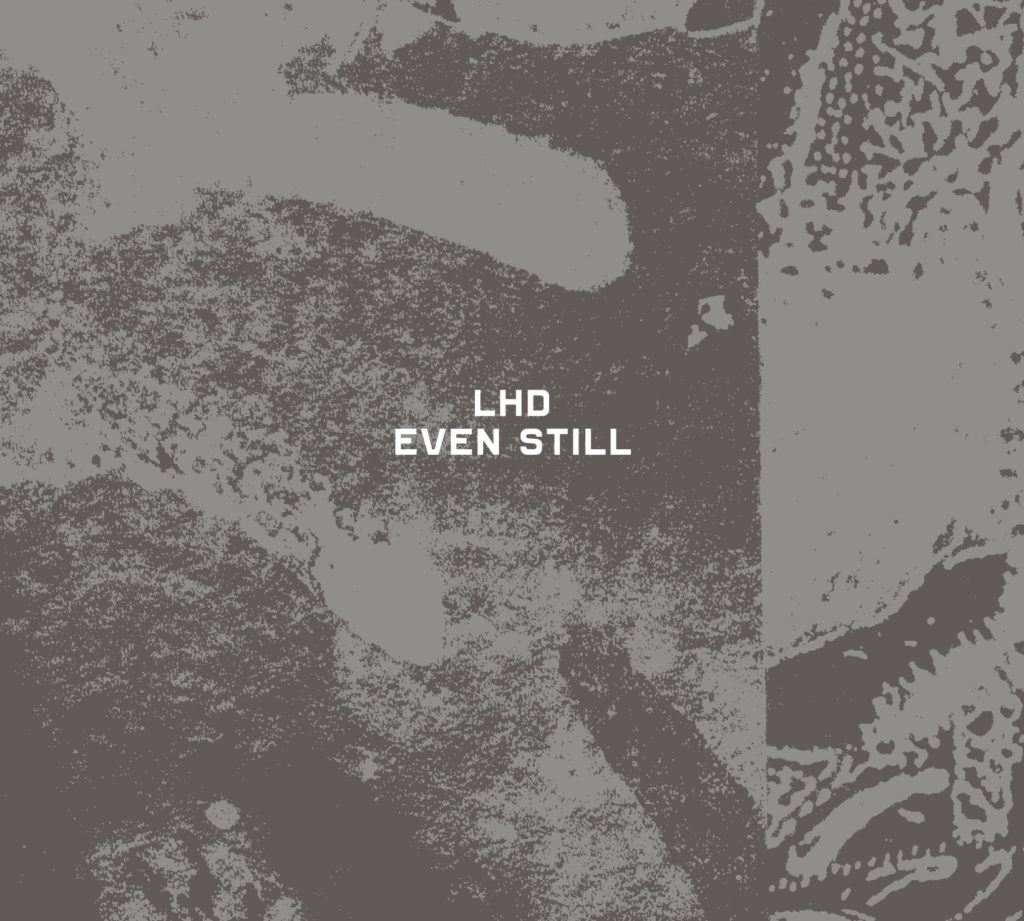
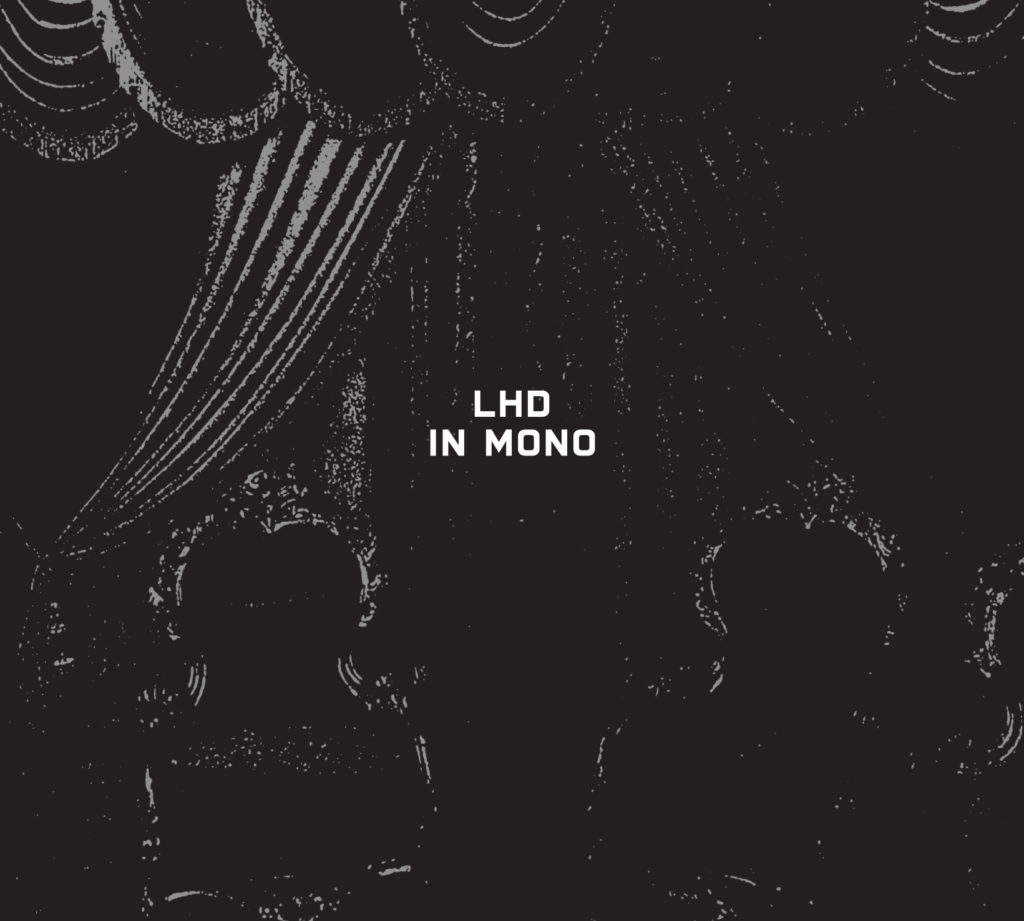
LHD
Even Still 2xCD
Deluxe digipak reissue for 2020!
Two-and-a-half hours covering the complete LHD vinyl discography recorded between 2002 and 2007 by the double flamethrower unit of PHIL BLANKENSHIP and JOHN WIESE. Pure West Coast destruction, maximum density and speaker shred. Includes tracks from these 7-inches: Asthma (Helicopter); Hands of the Priestess (Miisc); Fascination (Swampland); Hotel Fire (P-Tapes); Normandie (Tape Room); Lock Up (Helicopter); Los Angeles (Troniks); and Veiled (Helicopter), and tracks from these LPs: Triple Void (Chondritic Sound): Electrophorus (Collective JYRK): Trap (Troniks), split with Immaculate:Grotesque (Truculent Recordings), plus two additional tracks exclusive to Even Still.
LHD
In Mono 2xCD
Deluxe digipak pressing for 2020!
BURNING IN HELL WITH NO RELIEF. Nearly two full hours of scorched audio and blistering paralysis recorded in Los Angeles between 2002 and 2007 by the double flamethrower unit of PHIL BLANKENSHIP and JOHN WIESE. Compiling four original LHD albums onto two compact discs, featuring the complete recordings of Curtains (PACrec), Young and Restless (Blossoming Noise), Opaque (RRR/Pure) and Limbs of the Fawn (Misanthropic Agenda).
Expanded notes by Chris Sienko:
http://www.john-wiese.com/lhd/lhd-hysterical-blindness.pdf
A Helicopter/Troniks co-release, 2020.
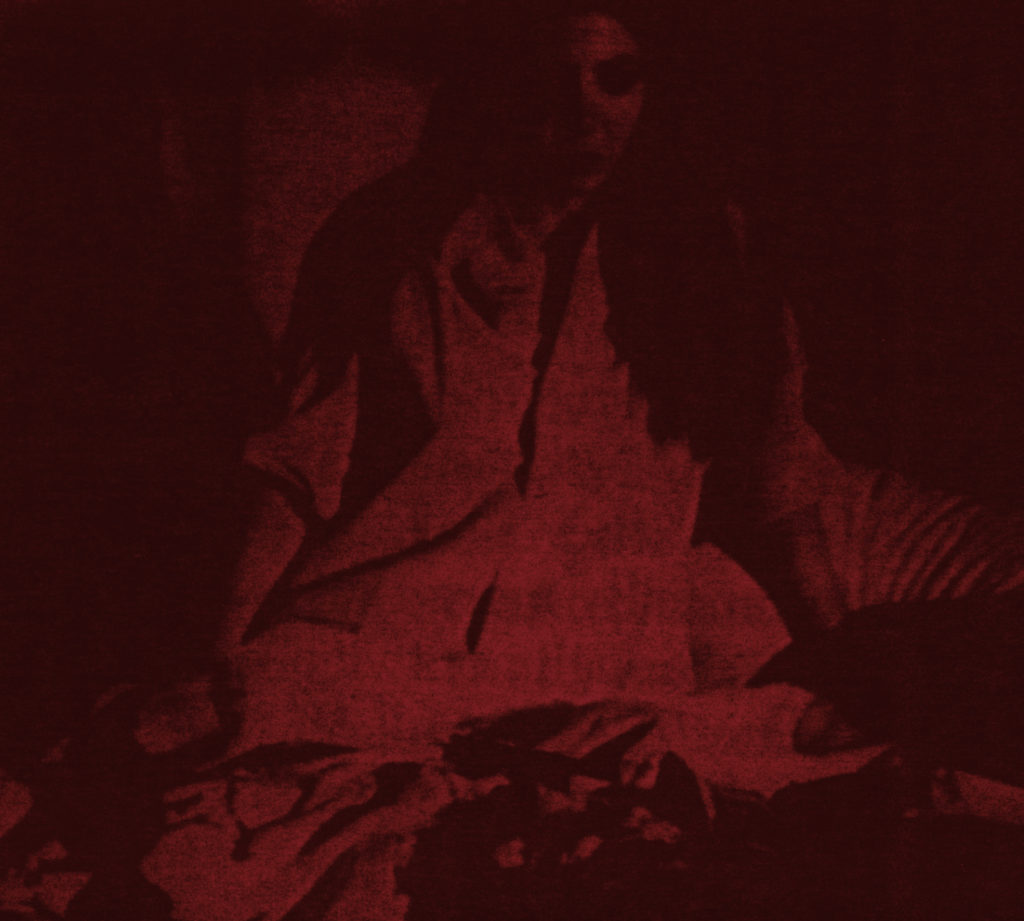
The Cherry Point
Night of the Bloody Tapes CD
Helicopter, HEL 99072
Troniks, TRO-300
Banned in 31 Countries!
15th Anniversary Reissue!
Deluxe, limited edition 6-panel digipak reissue of the defining The Cherry Point document.
Night of the Bloody Tapes provides a shattering drive-in experience of unrelenting horror & harsh noise nightmares fueled by Fangoria magazine, import laserdiscs, third generation vhs bootlegs, damaged contact mics, and DOD death metal distortion. Four tracks, over 40 minutes of static walls, electronic jabs and junk crashes compiled from a brutal host of long-gone cassette releases.
Mixed & mastered by John Wiese.
ESSENTIAL VIEWING: Shriek of the Mutilated, Raw Meat, Night of the Demon, Girls Nite Out, House on Sorority Row, Just Before Dawn, The Burning, Shock Waves, Mardi Gras Massacre, The Town That Dreaded Sundown, Criminally Insane, Creature From Black Lake, & The Deadly Spawn.
A Troniks / Helicopter co-release, 2020.
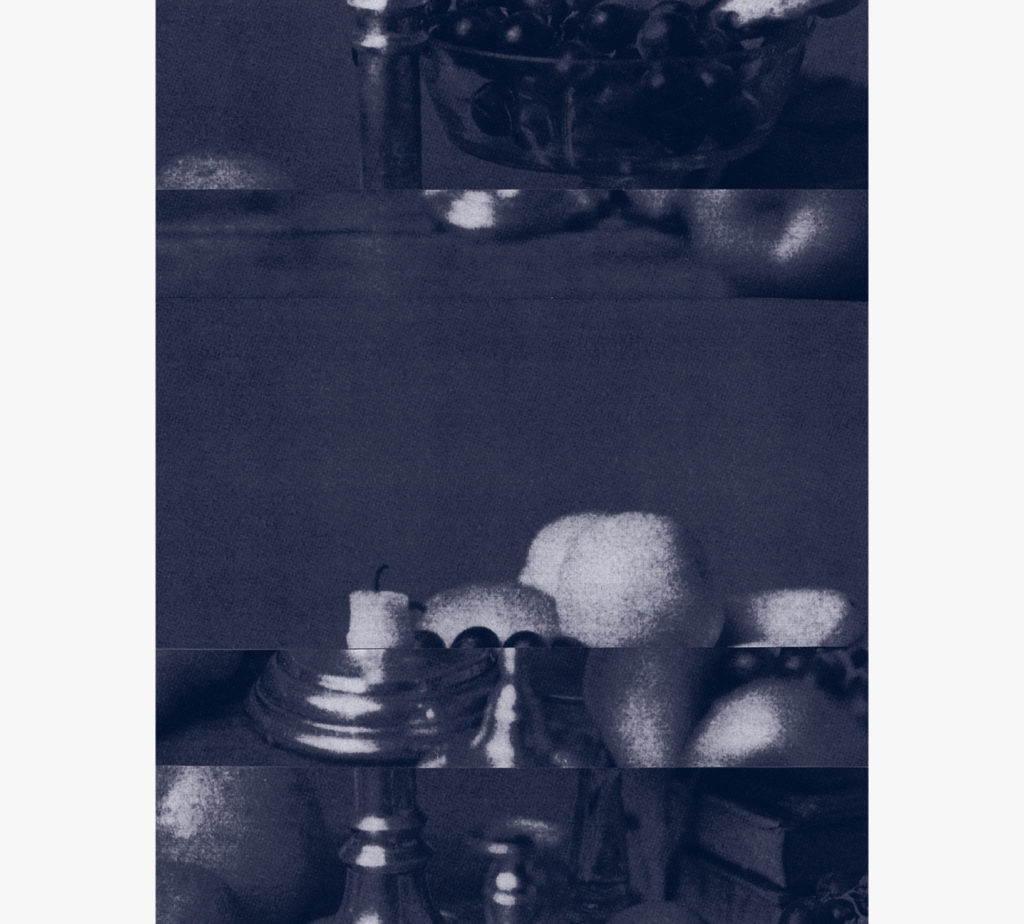
Sissy Spacek
Corpus
Helicopter/Troniks
H 98, TRO-303
Release date: June 5, 2020
1. Peak Everything/ 1
2. Peak Everything/ 2
3. Peak Everything/ 3
4. Peak Everything/ 4
5. Peak Everything/ 5
6. Peak Everything/ 6
7. Spirant (Mix)
8. Air Horn
9. Comic Mirror
10. Unnecessary Conversation
11. Disintegrating
12. Konkret/ 1
13. Konkret/ 2
14. Konkret/ 3
15. Konkret/ 4
16. Konkret/ 5
17. Konkret/ 6
18. Konkret/ 7
19. Konkret/ 8
20. Konkret/ 9
21. Konkret/ 0
Including: Sarah Bernat, Phil Blankenship, Ted Byrnes, Martín Escalante, Jon Lorenz, Lasse, Marhaug, Sean Matzus, Charlie Mumma, Richard Ramirez, John Rich, John Wiese, C. Spencer Yeh
Sleetmute Nightmute
Discography
CD
Helicopter
HEL 99071
Discography of Sleetmute’s early 2000’s Portland blasting No Wave. Includes their 7-inch and LP (originally released by Nathan of The Gossip’s Fast Weapons label), plus 10 unreleased songs (same sessions as the LP), and a live set.
http://helicopter-la.com/
http://helicopter.bandcamp.com/
http://john-wiese.com/zine/
Sissy Spacek
s/t
LP
Helicopter
H 93
20th anniversary edition of Sissy Spacek’s first album, first ever LP edition. Frantic, violent, destroyed music.
“Probably the world’s first plunderphonic grindcore record. Although in this case all of the plundering is self inflicted and self directed as they record their own blasting grind record and attack it with a razor blade and spit out a garbled, sputtering, stuttering no-wave masterpiece. Think Oval, if he only scratched Drop Dead and Crossed Out CDs. Nice.” —Aquarius Records
Sissy Spacek
Scissors
2×7-inch
Helicopter
H 94
20th anniversary edition of Sissy Spacek’s second album, first reissue since it’s original release. Incomprehensible, discombobulated.
“This four-track explosion of sound had my jaw agape from the first note to the last. With minor
percussive breaks between sizzling hard-wired damage, this wasn’t at all what I expected. Instead John Wiese has offered tracks that intensely re-align your senses for their fifteen minutes of “insane”. It’s not until we get to the final track “Please Don’t Sleep While We Explain” that the wash of colorful collision is tempered and muffled to conclusion. It’s a scream-fest, jazz jam with fire to spare. Not for the weak hearted.” —TJ Norris
http://helicopter-la.com/
http://helicopter.bandcamp.com/
http://sissyspacek.bandcamp.com/
http://john-wiese.com/
http://john-wiese.com/zine/
